Subject Explorer
School Subjects
Math & Science
Business & Technology
Electives & Health
Board & Administration
Teaching & Learning
Audio/Video Lectures
Books & Documents
Classifieds
Jobs & Resources
Discussions
Language & Literature

5th and 6th Grade Written Book Report Instructions
Student instructions for writing a book report in fifth and sixth grade. Includes the number of paragraphs in the report and three or four things to include in each paragraph.
Sign in to rate this resource.
Categories:
Resource Type:
Pass it on:
Related Items
February 2024 progress report, more from this series: karen’s upper elementary language arts resources.
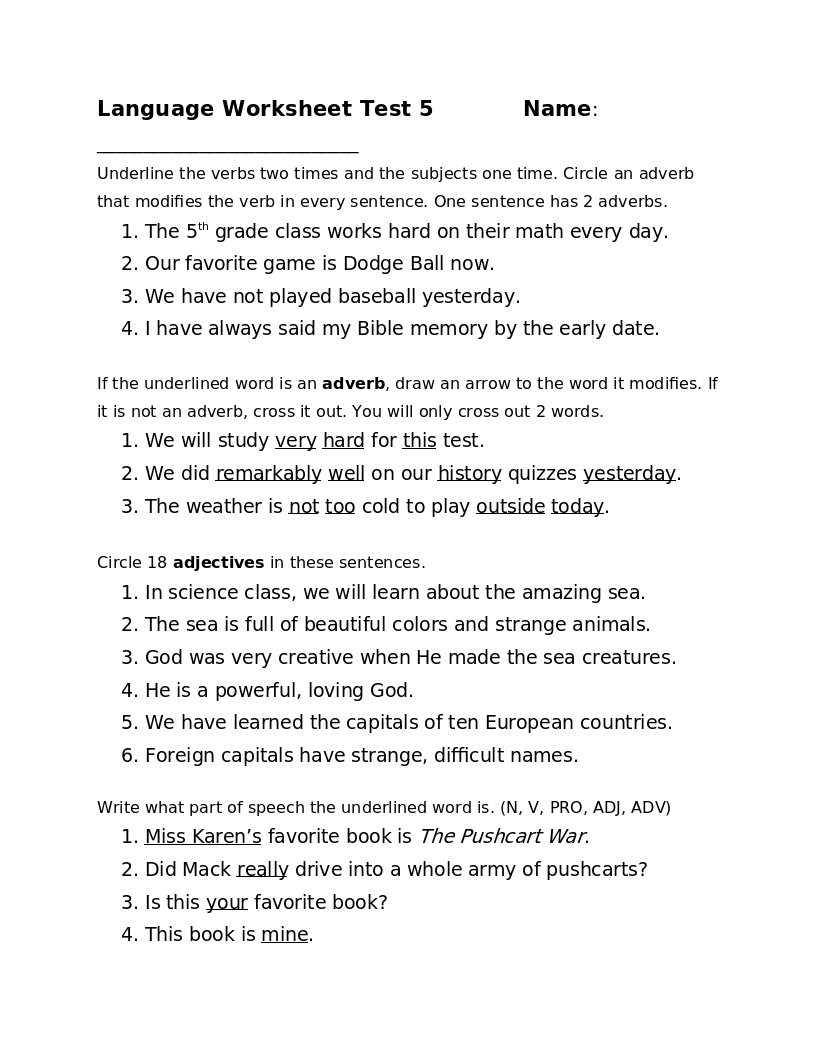
Grade 5 Language Practice Sheet Test 5
A practice paper for A Beka Language Grade 5, Test 5. Students find and identify subjects, verbs, adjectives, and adverbs. …
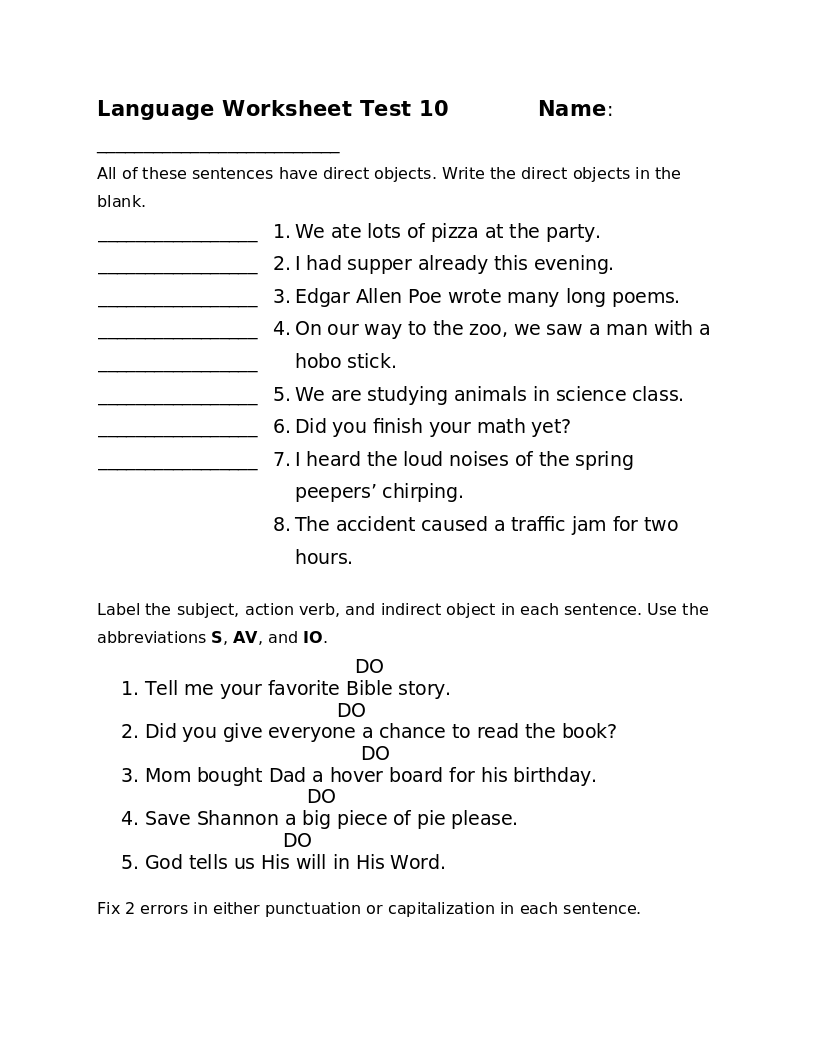
Grace 5 Language Practice Sheet Test 10
A practice paper for A Beka Language Grade 5, Test 10. Students find direct objects, label parts of speech, fix errors in punctuation and capitalization, and diagram sentences. …
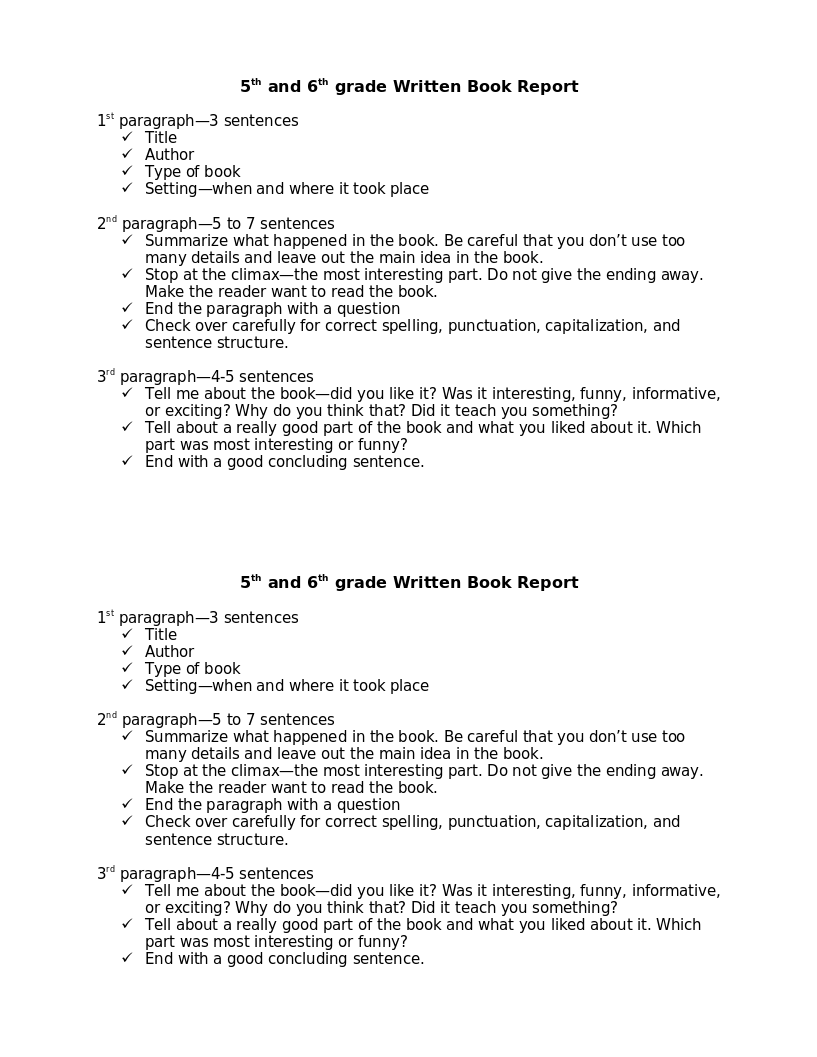
Student instructions for writing a book report in fifth and sixth grade. Includes the number of paragraphs in the report and three or four things to include in each paragraph. …
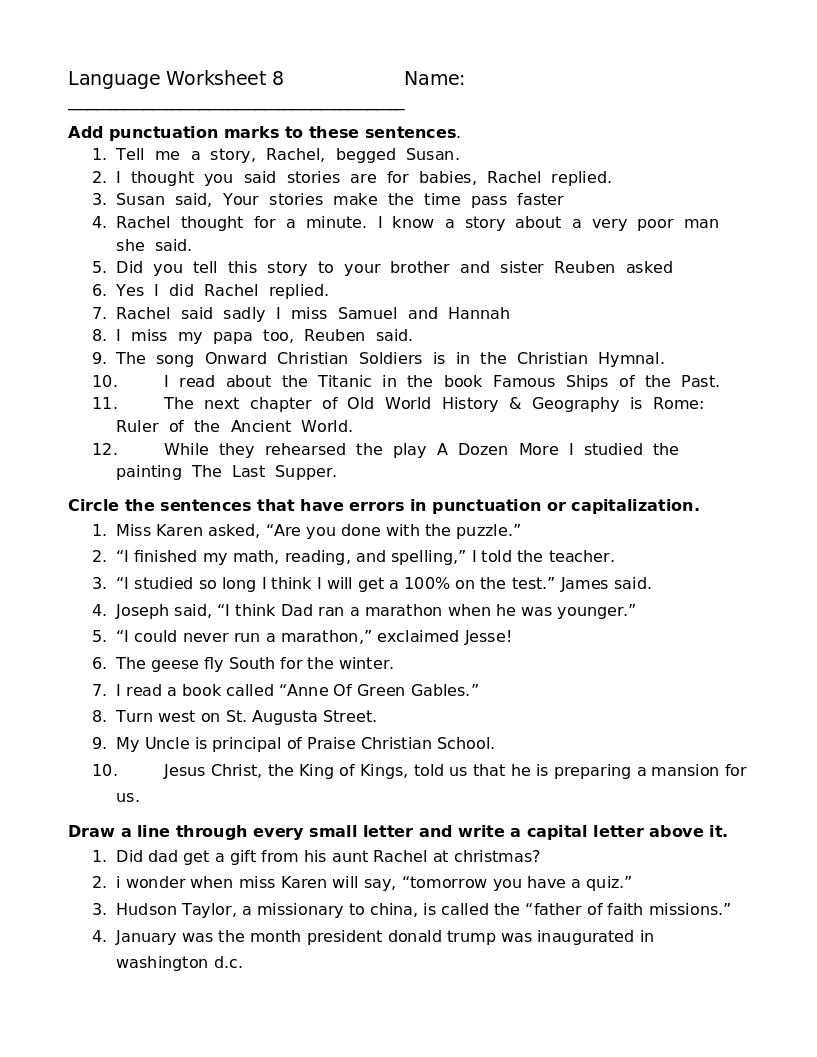
Grade 5 Language Practice Sheet Test 8
A practice paper for A Beka Language Grade 5, Test 8. Students add punctuation marks to sentences, find errors in punctuation and capitalization, and select the correct verb tense. …
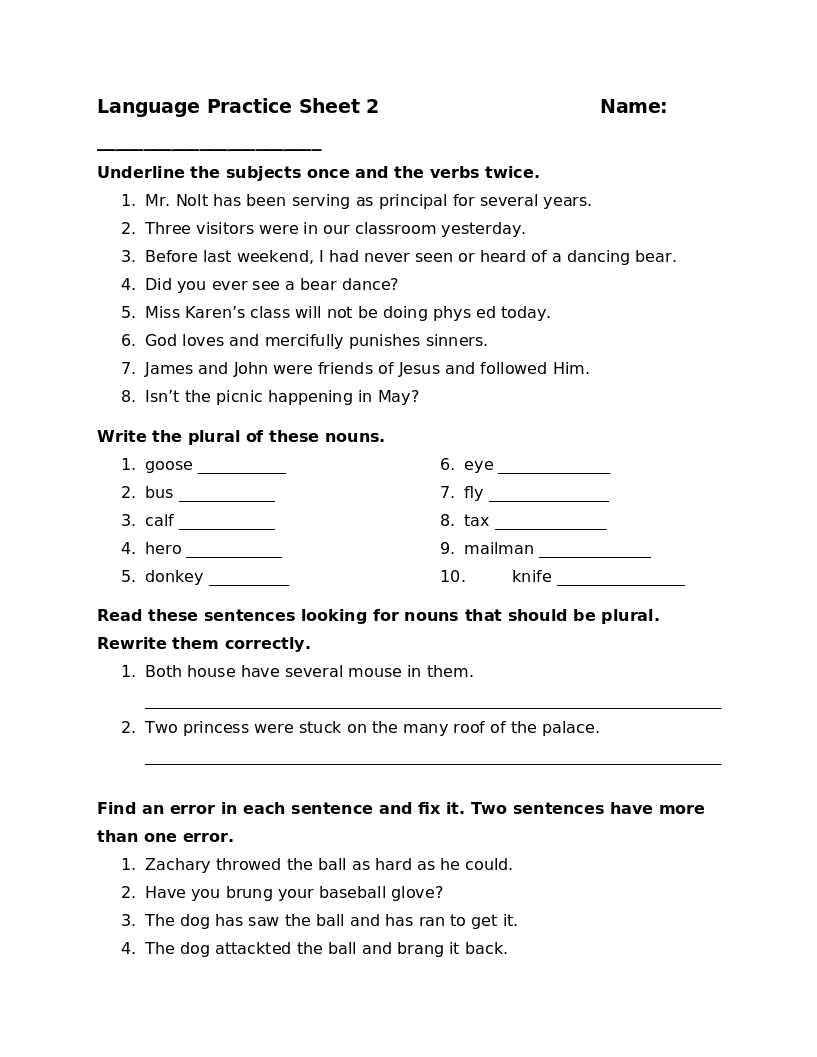
Grade 5 Language Practice Sheet Test 2
A practice paper for A Beka Language Grade 5, Test 2. Students find subjects and verbs, make nouns plural, find and fix errors in sentences , and find and categorize common and proper nouns. …
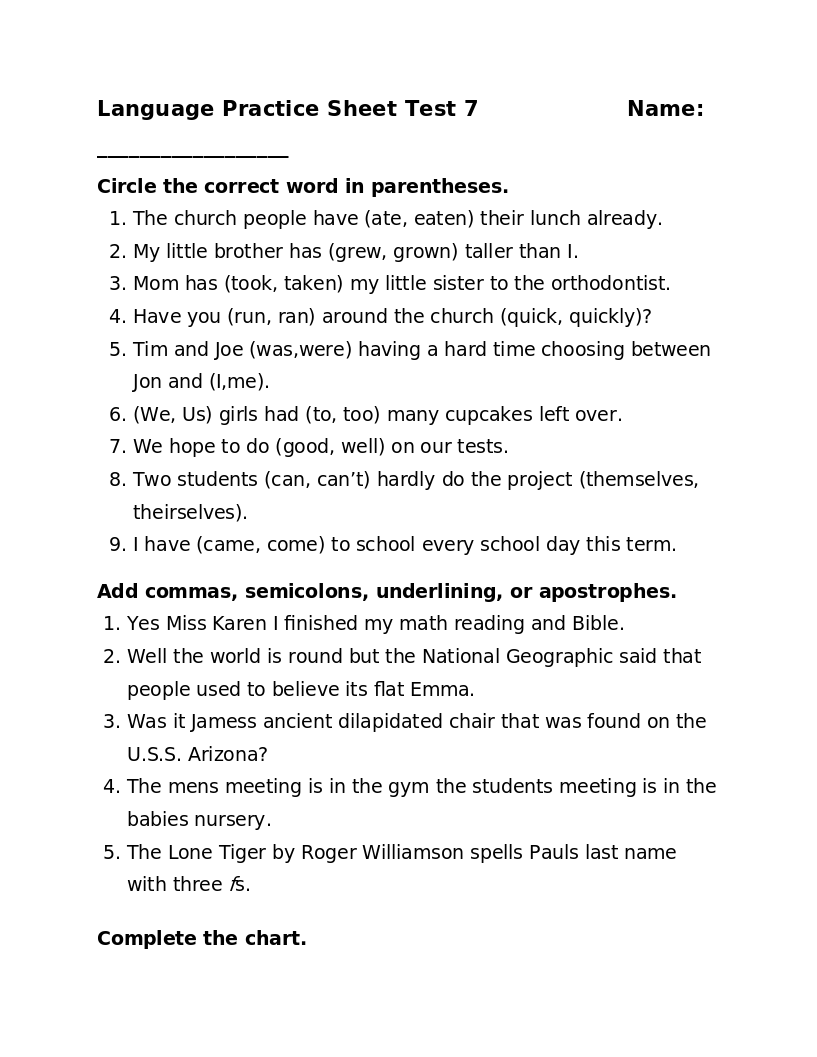
Grade 5 Language Practice Sheet Test 7
A practice paper for A Beka Language Grade 5, Test 7. Students find the correct verb tense, add punctuation to finish sentences, and change nouns to plural and possessive. …
Punctuation Posters
These images show the laminated posters where students write rules about apostrophes, underlining, capitalization, and commas. …
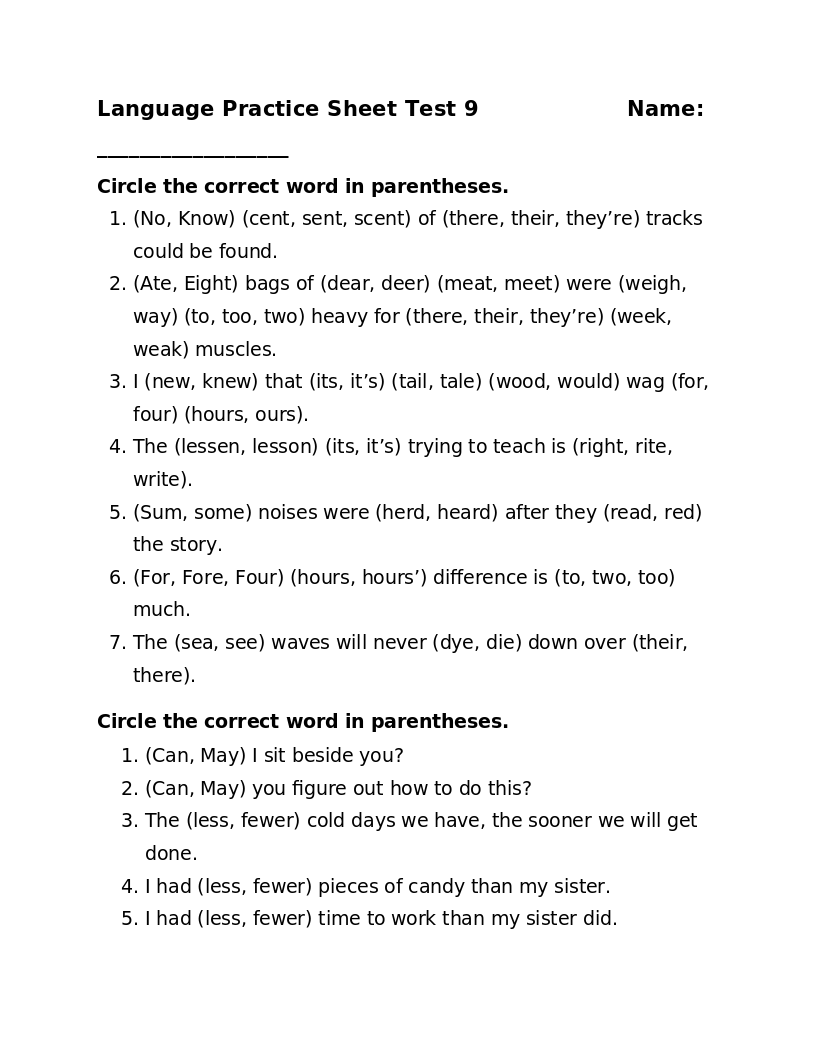
Grade 5 Language Practice Sheet Test 9
A practice paper for A Beka Language Grade 5, Test 9. Students circle the correct homophones and identify the proper usage of can/may, less/fewer, among/between, and amount/number in sentences. …
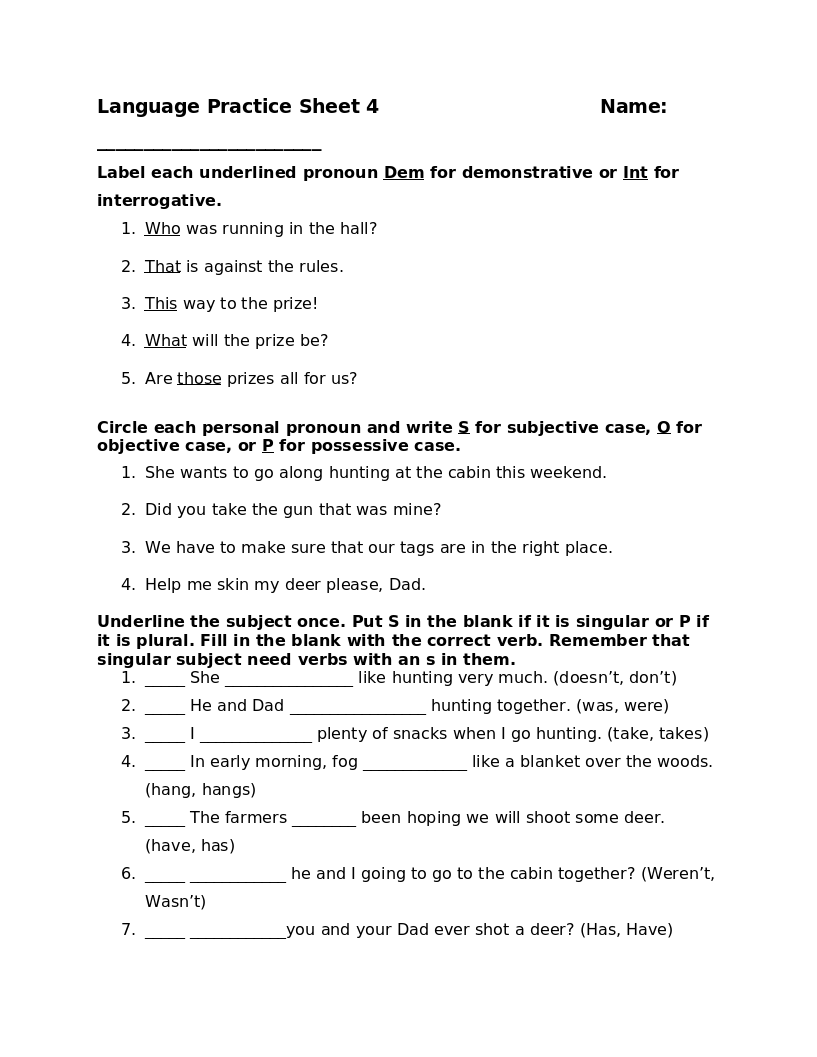
Grade 5 Language Practice Sheet Test 4
A practice paper for A Beka Language Grade 5, Test 4. Students do a variety of work with pronouns. …
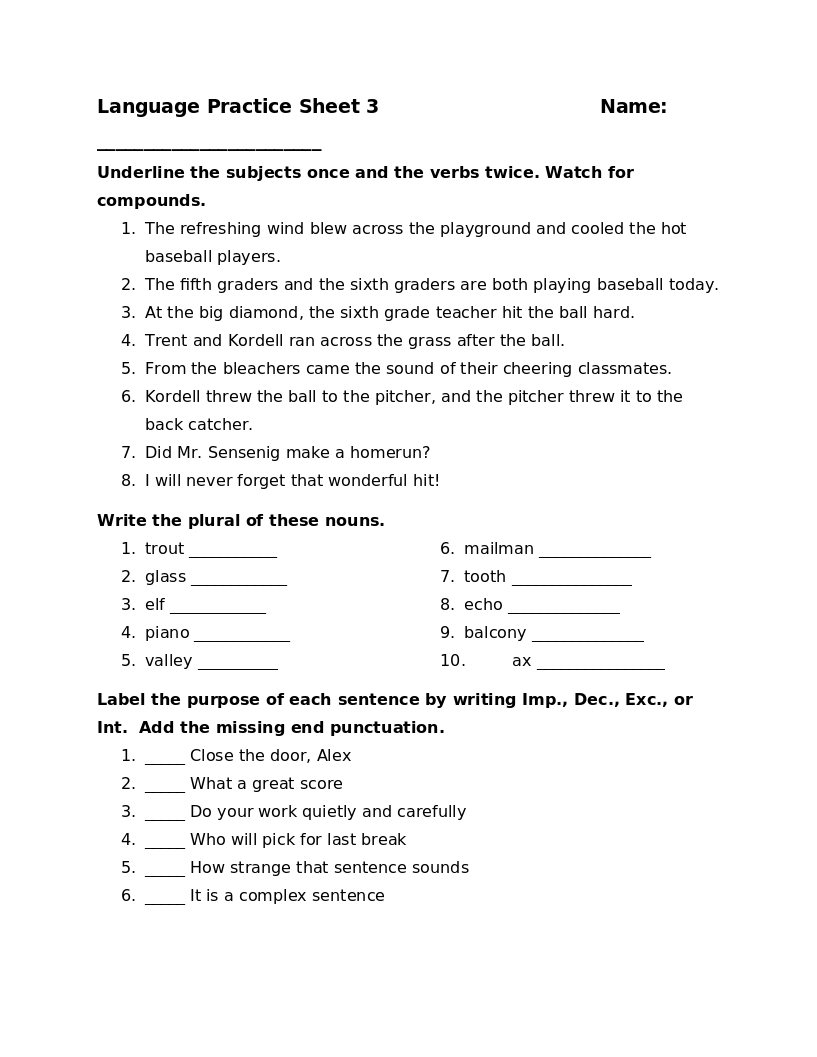
Grade 5 Language Practice Sheet Test 3
A practice paper for A Beka Language Grade 5, Test 3. Students find subjects and verbs, make nouns plural, identify different types of sentences and add the correct punctuation, write specific types …
Leave a Reply

How to Write a Book Report for Fifth Grade

How to Teach Second-Graders to Write Book Reports
Parents can remember a time when they had to write a book report in elementary school as a child. Depending on the student, being assigned a book report isn't always something a student looks forward to. According to Common Core State Standards, fifth grade is the year that students need to really practice their book report writing skills, as students are evaluated on how well they can write a piece based on information they gather from literature or other texts. In a teacher's eyes, one of the best ways to do this is by assigning a project, which can be fun and exciting if students are able to follow a few tips on writing a book report!
Choose a Book
The first step in writing a fifth grade book report is to, of course, choose a book! In some cases, the teacher will tell students which book they need to read, especially if students are all required to write a book report on a book read aloud in class. They may also tell the students which book to choose based on a certain topic the class is currently studying. Otherwise, a teacher may suggest to students which books are appropriate for them, or if the teacher trusts the student's abilities, they may say that the student is free to choose whichever book he or she wants.
Create a Story Map
After choosing a book, students will need to identify the key elements of the story they are reading. The easiest way to do this is with a story map. A story map provides space for students to write the title of the book, the author and illustrator's name, the genre, the setting, the characters, the main idea as well as the problem and solution in the story. For a fifth grade book report, the story map may be more extensive and detailed depending on the reading level of the student, and they may need to go into more depth on the story's plot, their reaction to the story, how they felt while reading it, etc. After the story map is completely filled out, students should have an easy time writing their book report because most of the information they need is already in front of them.
Understand the Objective of the Book Report
In many cases, teachers may simply ask their students to write a book report as a general summary of what they've read. But, since fifth graders need to build up their writing and text analysis skills, teachers may also dictate to students what they expect from the book report.
There are different kinds of book reports that students can write, including, but not limited to, a plot summary, a character analysis or a piece discussing the major themes in the story. Students in fifth grade may also be asked to compare two texts by the same author in their book report or make a self-to-text connection in which they compare an experience in their own lives to the experiences of the characters in the story. Students must understand the book report objective before going ahead.
Write Your Book Report Outline
With the story map in hand and the objective understood, students can now begin to write their book report outline. The outline helps students to construct their ideas one by one while seeing where they can string them together. Students can start their outline by creating several headings: introduction, at least three body paragraphs and a conclusion. Under each heading, students should write bullet points pulled from their story map along with supporting details from the text.
Afterward, each body paragraph can have a different heading based on the objective of the book report. For instance, if the book report is a character analysis, then the first body paragraph can be an introduction to the character and their role in the story, while the second body paragraph can discuss the character's personality and their actions throughout the book. Finally, the third body paragraph can be about how the student relates to the character or how they feel about the character by the end of the story. Because this is just an outline, each body paragraph can be given a heading, and underneath, the student can list bullet points of what they want to say, along with a quote or example from the text to support their writing.
Lastly, the conclusion should be somewhat of a reiteration of the introductory paragraph, with the student wrapping up their book report in a few sentences.
Things to Keep in Mind
To begin writing, students can use their teacher's guidelines, story map and book report outline to write their fifth grade book report. It's important to remember that although parents may want to help, students need to take the time to work on the book report by themselves. After the book report is complete, students should go back and read it out loud to themselves, in order to check for any mistakes and to make sure the writing flows nicely and isn't too choppy.
Related Articles

How to Write a Chapter Summary Template

How to Do a Summary of a News Article

How to Start a Good Book Report
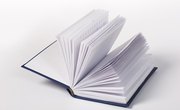
High School Book Project Ideas

3rd Grade Activities on Drawing Conclusions

Activities for "The Monkey's Paw"
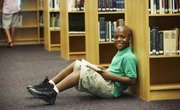
How to Write an Interview With a Book Character

How to Write an Eighth Grade Book Report
- Teacher Vision: Writing a Book Report
- USA.gov: Book Report
- Read Write Think: Help a Child Write a Book Report
- Corestandards.org: English Language Arts Standards Grade 5
Hana LaRock is a freelance content writer from New York, currently living in Mexico. Before becoming a writer, Hana worked as a teacher for several years in the U.S. and around the world. She has her teaching certification in Elementary Education and Special Education, as well as a TESOL certification. Please visit her website, www.hanalarockwriting.com, to learn more.
- Try for free
Printable Book Report Outlines and Examples
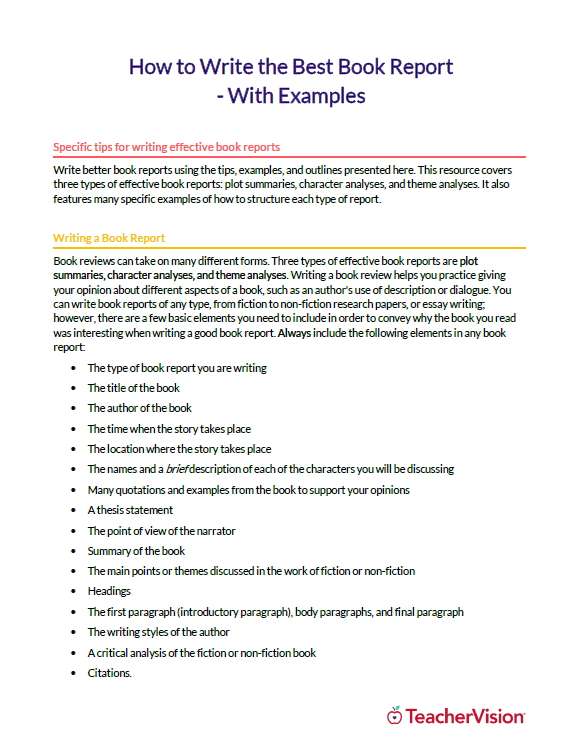
Assigning a book report as part of your reading or writing curriculum? Print and share this quick reference for how to write a book report - including all of the necessary elements, plus examples and outlines.
Looking for fiction and nonfiction titles to assign for book study, reader's theater, or literature circles? Visit our Literature Teaching Guides Hub to find thousands of book guides for all grades.

Featured Middle School Resources
Related Resources
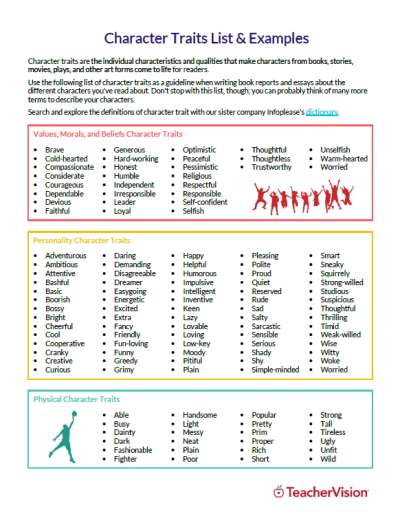
About the author

TeacherVision Editorial Staff
The TeacherVision editorial team is comprised of teachers, experts, and content professionals dedicated to bringing you the most accurate and relevant information in the teaching space.


How to Write a Book Report
Use the links below to jump directly to any section of this guide:
Book Report Fundamentals
Preparing to write, an overview of the book report format, how to write the main body of a book report, how to write a conclusion to a book report, reading comprehension and book reports, book report resources for teachers .
Book reports remain a key educational assessment tool from elementary school through college. Sitting down to close read and critique texts for their content and form is a lifelong skill, one that benefits all of us well beyond our school years. With the help of this guide, you’ll develop your reading comprehension and note-taking skills. You’ll also find resources to guide you through the process of writing a book report, step-by-step, from choosing a book and reading actively to revising your work. Resources for teachers are also included, from creative assignment ideas to sample rubrics.
Book reports follow general rules for composition, yet are distinct from other types of writing assignments. Central to book reports are plot summaries, analyses of characters and themes, and concluding opinions. This format differs from an argumentative essay or critical research paper, in which impartiality and objectivity is encouraged. Differences also exist between book reports and book reviews, who do not share the same intent and audience. Here, you’ll learn the basics of what a book report is and is not.
What Is a Book Report?
"Book Report" ( ThoughtCo )
This article, written by a professor emeritus of rhetoric and English, describes the defining characteristics of book reports and offers observations on how they are composed.
"Writing a Book Report" (Purdue OWL)
Purdue’s Online Writing Lab outlines the steps in writing a book report, from keeping track of major characters as you read to providing adequate summary material.
"How to Write a Book Report" ( Your Dictionary )
This article provides another helpful guide to writing a book report, offering suggestions on taking notes and writing an outline before drafting.
"How to Write a Successful Book Report" ( ThoughtCo )
Another post from ThoughtCo., this article highlights the ten steps for book report success. It was written by an academic advisor and college enrollment counselor.
What’s the Difference Between a Book Report and an Essay?
"Differences Between a Book Report & Essay Writing" ( Classroom)
In this article from the education resource Classroom, you'll learn the differences and similarities between book reports and essay writing.
"Differences Between a Book Report and Essay Writing" (SeattlePi.com)
In this post from a Seattle newspaper's website, memoirist Christopher Cascio highlights how book report and essay writing differ.
"The Difference Between Essays and Reports" (Solent Online Learning)
This PDF from Southampton Solent University includes a chart demonstrating the differences between essays and reports. Though it is geared toward university students, it will help students of all levels understand the differing purposes of reports and analytical essays.
What’s the Difference Between a Book Report and a Book Review?
"How to Write a Book Review and a Book Report" (Concordia Univ.)
The library at Concordia University offers this helpful guide to writing book report and book reviews. It defines differences between the two, then presents components that both forms share.
"Book Reviews" (Univ. of North Carolina)
The University of North Carolina at Chapel Hill’s writing guide shows the step-by-step process of writing book reviews, offering a contrast to the composition of book reports.
Active reading and thoughtful preparation before you begin your book report are necessary components of crafting a successful piece of writing. Here, you’ll find tips and resources to help you learn how to select the right book, decide which format is best for your report, and outline your main points.
Selecting and Finding a Book
"30 Best Books for Elementary Readers" (Education.com)
This article from Education.com lists 30 engaging books for students from kindergarten through fifth grade. It was written by Esme Raji Codell, a teacher, author, and children's literature specialist.
"How to Choose a Good Book for a Report (Middle School)" (WikiHow)
This WikiHow article offers suggestions for middle schoolers on how to choose the right book for a report, from getting started early on the search process to making sure you understand the assignment's requirements.
"Best Book-Report Books for Middle Schoolers" (Common Sense Media)
Common Sense Media has compiled this list of 25 of the best books for middle school book reports. For younger students, the article suggests you check out the site's "50 Books All Kids Should Read Before They're 12."
"50 Books to Read in High School" (Lexington Public Library)
The Lexington, Kentucky Public Library has prepared this list to inspire high school students to choose the right book. It includes both classics and more modern favorites.
The Online Computer Library Center's catalogue helps you locate books in libraries near you, having itemized the collections of 72,000 libraries in 170 countries.
Formats of Book Reports
"Format for Writing a Book Report" ( Your Dictionary )
Here, Your Dictionary supplies guidelines for the basic book report format. It describes what you'll want to include in the heading, and what information to include in the introductory paragraph. Be sure to check these guidelines against your teacher's requirements.
"The Good Old Book Report" (Scholastic)
Nancy Barile’s blog post for Scholastic lists the questions students from middle through high school should address in their book reports.
How to Write an Outline
"Writer’s Web: Creating Outlines" (Univ. of Richmond)
The University of Richmond’s Writing Center shows how you can make use of micro and macro outlines to organize your argument.
"Why and How to Create a Useful Outline" (Purdue OWL)
Purdue’s Online Writing Lab demonstrates how outlines can help you organize your report, then teaches you how to create outlines.
"Creating an Outline" (EasyBib)
EasyBib, a website that generates bibliographies, offers sample outlines and tips for creating your own. The article encourages you to think about transitions and grouping your notes.
"How to Write an Outline: 4 Ways to Organize Your Thoughts" (Grammarly)
This blog post from a professional writer explains the advantages of using an outline, and presents different ways to gather your thoughts before writing.
In this section, you’ll find resources that offer an overview of how to write a book report, including first steps in preparing the introduction. A good book report's introduction hooks the reader with strong opening sentences and provides a preview of where the report is going.
"Step-by-Step Outline for a Book Report" ( Classroom )
This article from Classroom furnishes students with a guide to the stages of writing a book report, from writing the rough draft to revising.
"Your Roadmap to a Better Book Report" ( Time4Writing )
Time4Writing offers tips for outlining your book report, and describes all of the information that the introduction, body, and conclusion should include.
"How to Start a Book Report" ( ThoughtCo)
This ThoughtCo. post, another by academic advisor and college enrollment counselor Grace Fleming, demonstrates how to write a pithy introduction to your book report.
"How to Write an Introduction for a Book Report" ( Classroom )
This brief but helpful post from Classroom details what makes a good book report introduction, down to the level of individual sentences.
The body paragraphs of your book report accomplish several goals: they describe the plot, delve more deeply into the characters and themes that make the book unique, and include quotations and examples from the book. Below are some resources to help you succeed in summarizing and analyzing your chosen text.
Plot Summary and Description
"How Do You Write a Plot Summary?" ( Reference )
This short article presents the goals of writing a plot summary, and suggests a word limit. It emphasizes that you should stick to the main points and avoid including too many specific details, such as what a particular character wears.
"How to Write a Plot for a Book Report" ( The Pen & The Pad )
In this article from a resource website for writers, Patricia Harrelson outlines what information to include in a plot summary for a book report.
"How to Write a Book Summary" (WikiHow)
Using Harry Potter and the Sorcerer’s Stone as an example, this WikiHow article demonstrates how to write a plot summary one step at a time.
Analyzing Characters and Themes
"How to Write a Character Analysis Book Report" ( The Pen & The Pad )
Kristine Tucker shows how to write a book report focusing on character. You can take her suggestions as they are, or consider incorporating them into the more traditional book report format.
"How to Write a Character Analysis" (YouTube)
The SixMinuteScholar Channel utilizes analysis of the film Finding Nemo to show you how to delve deeply into character, prioritizing inference over judgment.
"How to Define Theme" ( The Editor's Blog )
Fiction editor Beth Hill contributes an extended definition of theme. She also provides examples of common themes, such as "life is fragile."
"How to Find the Theme of a Book or Short Story" ( ThoughtCo )
This blog post from ThoughtCo. clarifies the definition of theme in relation to symbolism, plot, and moral. It also offers examples of themes in literature, such as love, death, and good vs. evil.
Selecting and Integrating Quotations
"How to Choose and Use Quotations" (Santa Barbara City College)
This guide from a college writing center will help you choose which quotations to use in your book report, and how to blend quotations with your own words.
"Guidelines for Incorporating Quotes" (Ashford Univ.)
This PDF from Ashford University's Writing Center introduces the ICE method for incorporating quotations: introduce, cite, explain.
"Quote Integration" (YouTube)
This video from The Write Way YouTube channel illustrates how to integrate quotations into writing, and also explains how to cite those quotations.
"Using Literary Quotations" (Univ. of Wisconsin-Madison)
This guide from the University of Wisconsin-Madison’s Writing Center helps you emphasize your analysis of a quotation, and explains how to incorporate quotations into your text.
Conclusions to any type of paper are notoriously tricky to write. Here, you’ll learn some creative ways to tie up loose ends in your report and express your own opinion of the book you read. This open space for sharing opinions that are not grounded in critical research is an element that often distinguishes book reports from other types of writing.
"How to Write a Conclusion for a Book Report" ( Classroom )
This brief article from the education resource Classroom illustrates the essential points you should make in a book report conclusion.
"Conclusions" (Univ. of North Carolina)
The University of North Carolina at Chapel Hill’s Writing Center lays out strategies for writing effective conclusions. Though the article is geared toward analytical essay conclusions, the tips offered here will also help you write a strong book report.
"Ending the Essay: Conclusions" (Harvard College Writing Center)
Pat Bellanca’s article for Harvard University’s Writing Center presents ways to conclude essays, along with tips. Again, these are suggestions for concluding analytical essays that can also be used to tie up a book report's loose ends.
Reading closely and in an engaged manner is the strong foundation upon which all good book reports are built. The resources below will give you a picture of what active reading looks like, and offer strategies to assess and improve your reading comprehension. Further, you’ll learn how to take notes—or “annotate” your text—making it easier to find important information as you write.
How to Be an Active Reader
"Active Reading Strategies: Remember and Analyze What You Read" (Princeton Univ.)
Princeton University’s McGraw Center for Teaching and Learning recommends ten strategies for active reading, and includes sample diagrams.
"Active Reading" (Open Univ.)
The Open University offers these techniques for reading actively alongside video examples. The author emphasizes that you should read for comprehension—not simply to finish the book as quickly as possible.
"7 Active Reading Strategies for Students" ( ThoughtCo )
In this post, Grace Fleming outlines seven methods for active reading. Her suggestions include identifying unfamiliar words and finding the main idea.
"5 Active Reading Strategies for Textbook Assignments" (YouTube)
Thomas Frank’s seven-minute video demonstrates how you can retain the most important information from long and dense reading material.
Assessing Your Reading Comprehension
"Macmillan Readers Level Test" (MacMillan)
Take this online, interactive test from a publishing company to find out your reading level. You'll be asked a number of questions related to grammar and vocabulary.
"Reading Comprehension Practice Test" (ACCUPLACER)
ACCUPLACER is a placement test from The College Board. This 20-question practice test will help you see what information you retain after reading short passages.
"Reading Comprehension" ( English Maven )
The English Maven site has aggregated exercises and tests at various reading levels so you can quiz your reading comprehension skills.
How to Improve Your Reading Comprehension
"5 Tips for Improving Reading Comprehension" ( ThoughtCo )
ThoughtCo. recommends five tips to increase your reading comprehension ability, including reading with tools such as highlighters, and developing new vocabulary.
"How to Improve Reading Comprehension: 8 Expert Tips" (PrepScholar)
This blog post from PrepScholar provides ideas for improving your reading comprehension, from expanding your vocabulary to discussing texts with friends.
CrashCourse video: "Reading Assignments" (YouTube)
This CrashCourse video equips you with tools to read more effectively. It will help you determine how much material you need to read, and what strategies you can use to absorb what you read.
"Improving Reading Comprehension" ( Education Corner )
From a pre-reading survey through post-reading review, Education Corner walks you through steps to improve reading comprehension.
Methods of In-text Annotation
"The Writing Process: Annotating a Text" (Hunter College)
This article from Hunter College’s Rockowitz Writing Center outlines how to take notes on a text and provides samples of annotation.
"How To Annotate Text While Reading" (YouTube)
This video from the SchoolHabits YouTube channel presents eleven annotation techniques you can use for better reading comprehension.
"5 Ways To Annotate Your Books" ( Book Riot )
This article from the Book Riot blog highlights five efficient annotation methods that will save you time and protect your books from becoming cluttered with unnecessary markings.
"How Do You Annotate Your Books?" ( Epic Reads )
This post from Epic Reads highlights how different annotation methods work for different people, and showcases classic methods from sticky notes to keeping a reading notebook.
Students at every grade level can benefit from writing book reports, which sharpen critical reading skills. Here, we've aggregated sources to help you plan book report assignments and develop rubrics for written and oral book reports. You’ll also find alternative book report assessment ideas that move beyond the traditional formats.
Teaching Elementary School Students How to Write Book Reports
"Book Reports" ( Unique Teaching Resources )
These reading templates courtesy of Unique Teaching Resources make great visual aids for elementary school students writing their first book reports.
"Elementary Level Book Report Template" ( Teach Beside Me )
This printable book report template from a teacher-turned-homeschooler is simple, classic, and effective. It asks basic questions, such as "who are the main characters?" and "how did you feel about the main characters?"
"Book Reports" ( ABC Teach )
ABC Teach ’s resource directory includes printables for book reports on various subjects at different grade levels, such as a middle school biography book report form and a "retelling a story" elementary book report template.
"Reading Worksheets" ( Busy Teacher's Cafe )
This page from Busy Teachers’ Cafe contains book report templates alongside reading comprehension and other language arts worksheets.
Teaching Middle School and High School Students How to Write Book Reports
"How to Write a Book Report: Middle and High School Level" ( Fact Monster)
Fact Monster ’s Homework Center discusses each section of a book report, and explains how to evaluate and analyze books based on genre for students in middle and high school.
"Middle School Outline Template for Book Report" (Trinity Catholic School)
This PDF outline template breaks the book report down into manageable sections for seventh and eighth graders by asking for specific information in each paragraph.
"Forms for Writing a Book Report for High School" ( Classroom )
In this article for Classroom, Elizabeth Thomas describes what content high schoolers should focus on when writing their book reports.
"Forms for Writing a Book Report for High School" ( The Pen & The Pad )
Kori Morgan outlines techniques for adapting the book report assignment to the high school level in this post for The Pen & The Pad .
"High School Book Lists and Report Guidelines" (Highland Hall Waldorf School)
These sample report formats, grading paradigms, and tips are collected by Highland Hall Waldorf School. Attached are book lists by high school grade level.
Sample Rubrics
"Book Review Rubric Editable" (Teachers Pay Teachers)
This free resource from Teachers Pay Teachers allows you to edit your book report rubric to the specifications of your assignment and the grade level you teach.
"Book Review Rubric" (Winton Woods)
This PDF rubric from a city school district includes directions to take the assignment long-term, with follow-up exercises through school quarters.
"Multimedia Book Report Rubric" ( Midlink Magazine )
Perfect for oral book reports, this PDF rubric from North Carolina State University's Midlink Magazine will help you evaluate your students’ spoken presentations.
Creative Book Report Assignments
"25 Book Report Alternatives" (Scholastic)
This article from the Scholastic website lists creative alternatives to the standard book report for pre-kindergarteners through high schoolers.
"Fresh Ideas for Creative Book Reports" ( Education World )
Education World offers nearly 50 alternative book report ideas in this article, from a book report sandwich to a character trait diagram.
"A Dozen Ways to Make Amazingly Creative Book Reports" ( We Are Teachers )
This post from We Are Teachers puts the spotlight on integrating visual arts into literary study through multimedia book report ideas.
"More Ideas Than You’ll Ever Use for Book Reports" (Teachnet.com)
This list from Teachnet.com includes over 300 ideas for book report assignments, from "interviewing" a character to preparing a travel brochure to the location in which the book is set.
"Fifty Alternatives to the Book Report" (National Council of Teachers of English)
In this PDF resource from the NCTE's English Journal, Diana Mitchell offers assignment ideas ranging from character astrology signs to a character alphabet.
- PDFs for all 136 Lit Terms we cover
- Downloads of 1904 LitCharts Lit Guides
- Teacher Editions for every Lit Guide
- Explanations and citation info for 40,084 quotes across 1904 books
- Downloadable (PDF) line-by-line translations of every Shakespeare play
Need something? Request a new guide .
How can we improve? Share feedback .
LitCharts is hiring!

- Grades 6-12
- School Leaders
FREE Poetry Worksheet Bundle! Perfect for National Poetry Month.
Free Book Report Templates: Printables for Grades 3-5 for Fiction or Nonfiction Books
Take a new spin on your book report assignment. 📚😍
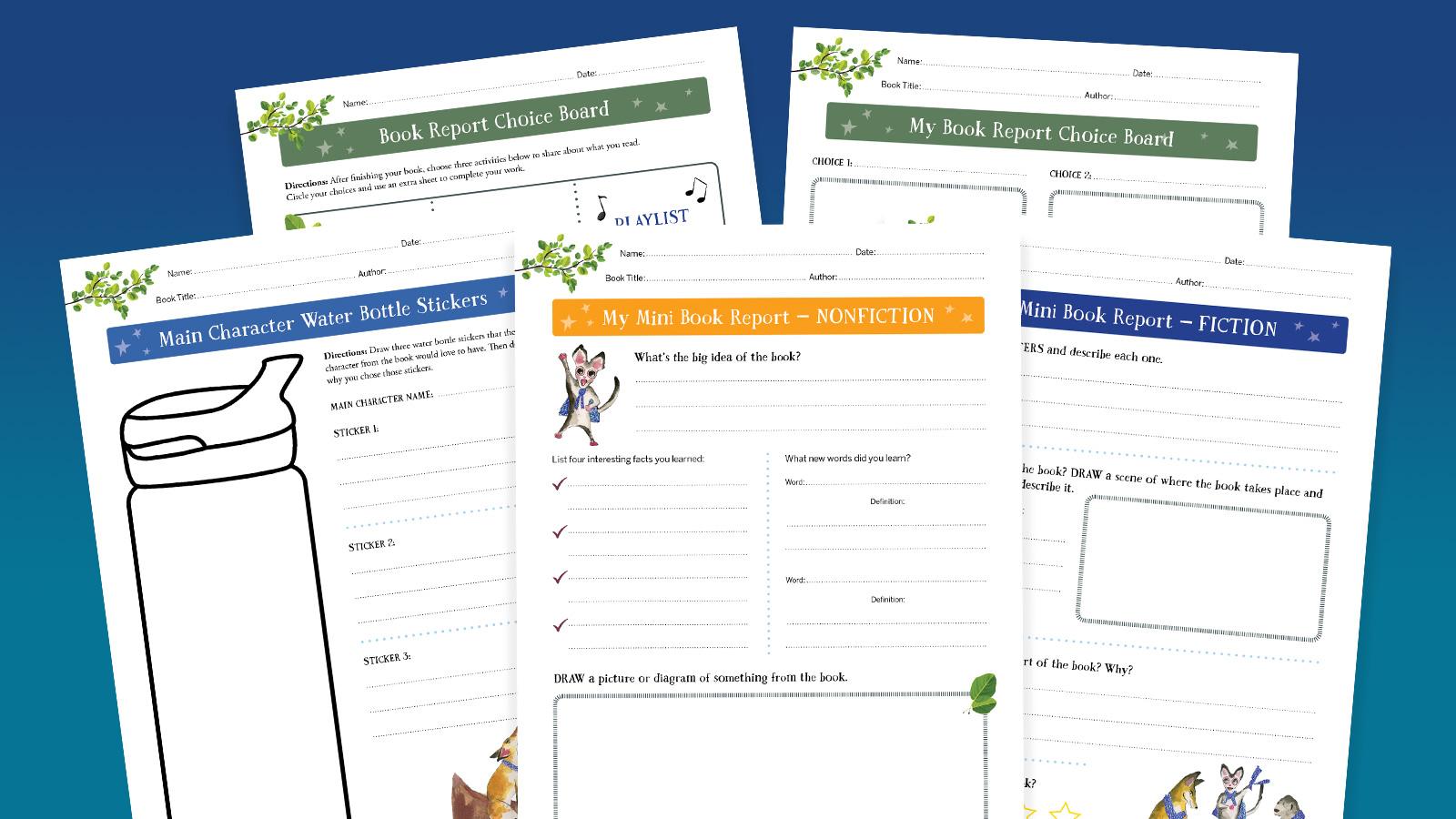
The Nocturnals are fun-filled animal adventure books with companion nonfiction for elementary school classrooms. Check out The Nocturnals World , a resource hub with free turnkey printable activities and educator guides, and browse The Nocturnals bookstore!
Building lifelong readers is one of the most important things we can do in our classrooms. The benefits of reading are wide-ranging, from improving vocabulary skills to boosting cognitive development, concentration skills, and curiosity for learning. So, how do we get young learners excited about reading and sharing what they’ve learned? Check out our free book report template printables .
Four different activities are ready to print to help you take a new spin on your next book report assignment for fiction or nonfiction books. Students will love filling in their mini book report one-pagers or making their selections from the choice board to share details about what they read.
Worksheets Included:
My mini book report—fiction and nonfiction.
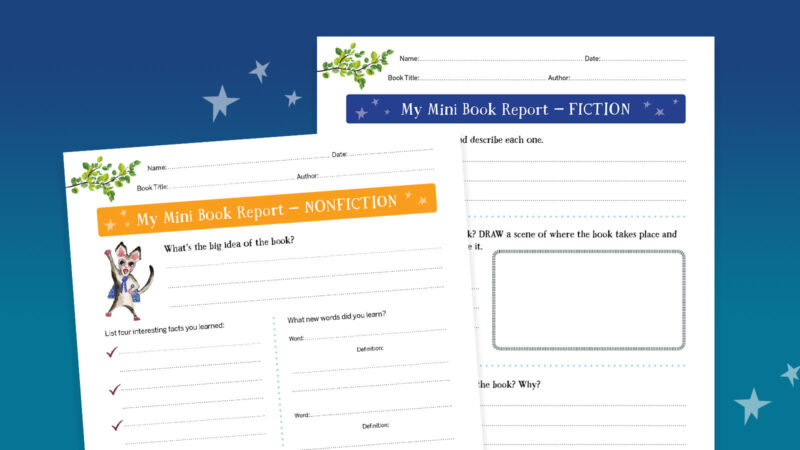
These book report one-pagers are a great way for students to reflect on their readings as they complete different sections of the worksheet. There’s a version for both fiction and nonfiction.
Book Report Choice Board
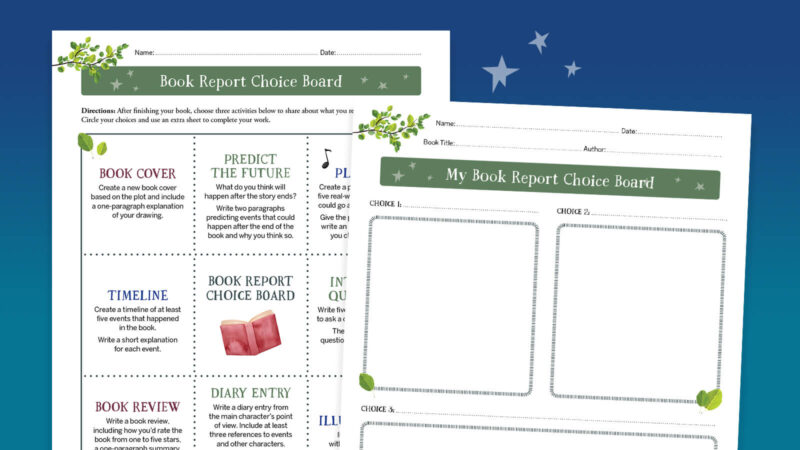
Give students choices on how they want to complete their book report assignment. This choice board offers eight fun options, from designing a comic to creating a playlist or writing interview questions, so students can let their creativity guide them.
Designing Water Bottle Stickers
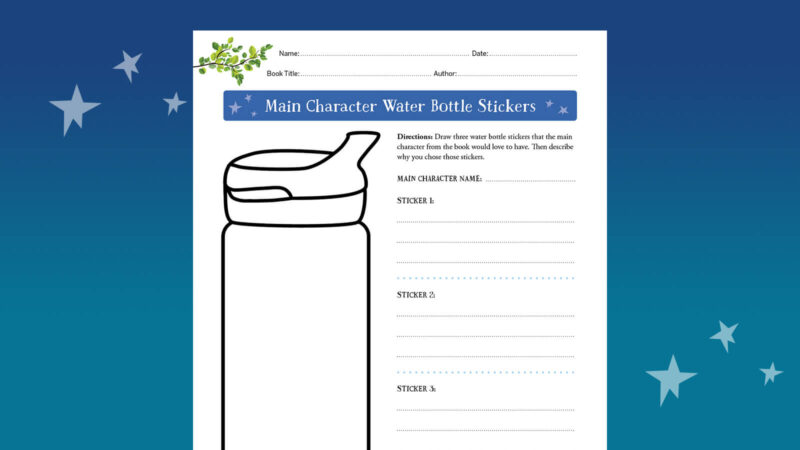
Students are obsessed with stickers. In this unique activity, students will design water bottle stickers that the main character of the book would love to have, along with a short description of their choices.
Give students fun-filled books to choose from
Animal adventure books from The Nocturnals are the perfect way to get your upper elementary students excited about reading. Paired with nonfiction companion texts that explore nocturnal animal facts, this series is great for hi-lo readers. Visit The Nocturnals World for more free printable activities and educator guides.
You Might Also Like
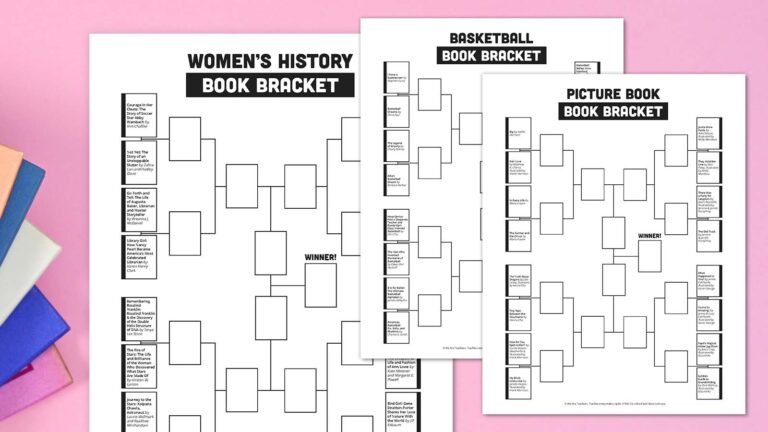
Book Bracket Template: Free Download for March Madness and Beyond
It's a battle of the books! Continue Reading
Copyright © 2023. All rights reserved. 5335 Gate Parkway, Jacksonville, FL 32256

Book Report Ideas for 5th Grade that Spark Imagination
That’s So Montessori is reader-supported, contains affiliate links, and is a member of Amazon Services LLC Associates Program. When you buy through links on our site, you may be purchasing our products or we may earn an affiliate commission at no extra cost to you. Your support is much appreciated. Thank you!
As an experienced Montessori elementary teacher, fostering a passion for reading is a key aspect of my language curriculum.
That’s why I want to share this list of great book report ideas for your 5th grade classroom.
In elementary classrooms, I’ve learned that a fun book report makes the reading experience more memorable. That’s why it’s important to make reading and reporting a blast for every student!

Discover 13 creative book report ideas for 5th graders, perfect for enriching reading experiences in upper elementary classrooms. Explore how these ideas can make reading assignments more engaging and meaningful for students.
Make Book Reports Fun for 5th Grade Students
Indeed, when creating fun book report ideas for 5th graders, they should match the curiosity typical of kids in the second plane of development .
At this age, kids move from needing help to wanting to explore on their own. To support this shift, it’s important to add fun enjoyable vocabulary development activities and hands-on experiences to their book reports.
Fun book reports cultivate a love for reading and self-expression, blending learning with enjoyment for kids. This is what we call learning in disguise .

We’ve included activities that capture attention and align with the Montessori philosophy. They encourage independent thinking, exploration, and unique problem-solving approaches.
13 Creative Book Report Ideas for 5th Graders
Transform book reports into engaging adventures for 5th graders with these innovative and enjoyable ideas.
💡 Teacher Tip: Incorporate some of these book report ideas into your family book club for added excitement. Prepare to captivate everyone in the household!
1. Interview the Main Character s
When students interview a book’s main character, they act as reporters, igniting curiosity and engagement.
By creating captivating questions for the main characters, they not only enhance critical thinking but also look deeper into the story, making the learning process more fulfilling.
Here are some engaging interview questions for a fifth-grade student to ask the main character of a book they read:
- Are there any hobbies or interests you have that weren’t explored in the book?
- How would your friends describe you?
- If you could switch places with another character in the story for a day, who would it be and why?
- How do you see your life beyond the ending of the story?
- What is the most important lesson you’ve learned from your journey in the story?
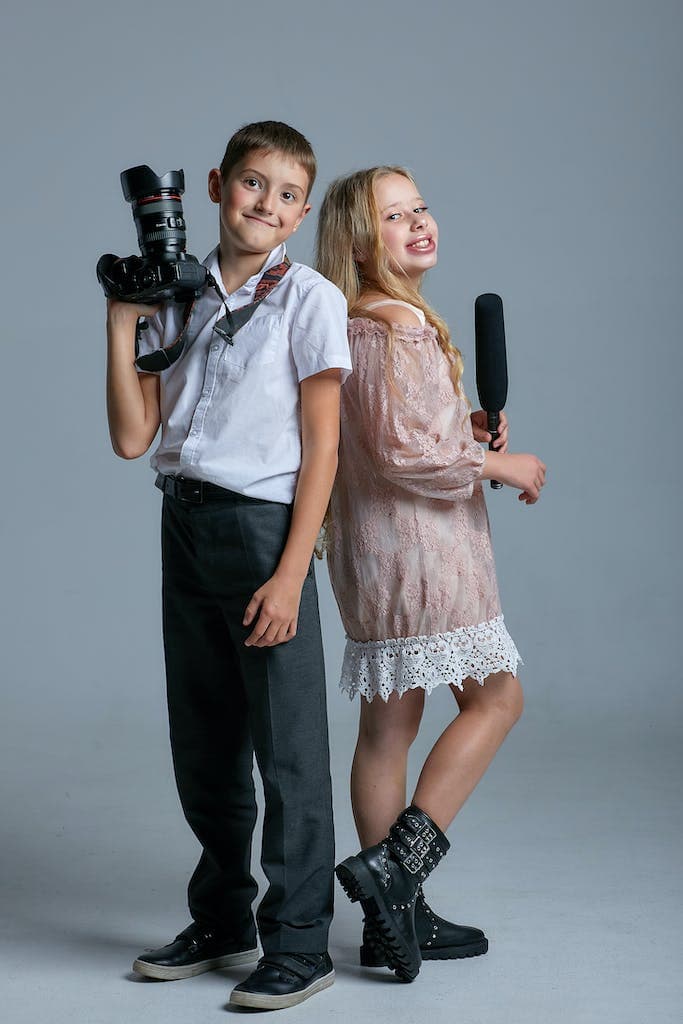
Additionally, have students answer the questions they came up with. Encourage them to use the voices of different characters, providing answers in the unique perspective of each persona.
Based on my experience, this is one of those book report ideas for 5th grade students that stands out because it enables students to explore the main character in a captivating manner. They formulate the questions, engaging deeply with the character.
This book report prompts elementary students to think differently, fostering a thought-provoking experience.
💡 Related articles: 31 Fun Summer Reading Activities Elementary Students Will Love Summer Brain Drain: 9 Ways to Help Elementary Children Avoid the Summer Slide 27 Educational YouTube Channels to Prevent Summer Learning Loss
2. Film a Movie Trailer for the Book
Elevate book reports by delving into multimedia storytelling. Empower students to create engaging movie trailers for the book they finished reading.
With this activity kids combine technology and creativity to showcase key moments, characters, and the story’s excitement.

My students loved making these trailers! 🎬
I’d have them work in small groups over a couple of weeks, planning and filming their creations. They really got creative, dressing up as characters and using props for authenticity. Then they’d put it all together using iMovie to create their final book trailers
We’d then gather as a class on a designated day to watch all the trailers, creating a memorable experience for everyone!
This dynamic approach not only boosts their digital literacy skills but also showcases their enthusiasm for the book.
3. Write an Alternative Ending
Encourage upper elementary students to think critically and creatively by exploring different ways a book could have ended.
Discussing alternate endings lets kids exercise creativity and analytical skills when a story takes an unexpected turn.
This engaging activity extends beyond altering endings. It serves as a platform for students to express their reasoning, providing insight into narrative choices and their impact on the overall story.

To start this engaging activity, I have students brainstorm and jot down potential alternate endings.
From these ideas, they choose one to develop further. They then embark on the task of writing a descriptive and meaningful alternate ending that flows seamlessly with the story.
This hands-on approach of putting their stamp on the story enhances their comprehension of the narrative. It also encourages them to think about character motivations, plot dynamics, and the overall impact of their chosen ending.
💡 Teacher Tip: Have students write an alternative ending, and then film a scene from the new ending they’ve written. How fun!
As you can see, these 5th-grade book report ideas are ideal for any elementary classroom.
4. Explore Different Characters’ Viewpoints
Students, in this activity, become sidekicks and antagonists, gaining different perspectives on the story’s events.
Based on Montessori principles, this method expands comprehension, thereby fostering empathy and critical thinking. Moreover, by embodying different characters’ perspectives, students develop a richer understanding of varied viewpoints in the story. This, in turn, enhances both creative and analytical abilities.

My 5th-grade students loved this book report idea. They selected 3 or 4 characters from the book, excluding the main one, and answered questions from each character’s perspective, providing distinct insights into the story.
This activity seamlessly blends creativity and analytical exploration, rendering the book-reporting process both enjoyable and insightful.
🤨 Curious about the questions my students selected? Here are some of their favourites:
- If your character was the main character, would the book title change?
- How does your character perceive other characters in the book?
- If your character were to tell the story from their perspective, how might the narrative change?
- If your character had the opportunity to change one event in the story, what would it be and why?
- What is your character’s relationship with the main antagonist or opposing force in the story?
5. Curate a Main Character Scrapbook
This 5th-grade book report idea deepens students’ connection with the main characters uniquely.
Young readers are invited to create a scrapbook that visually captures the main character’s personality, hobbies, and journey throughout the book.
In this activity, students create a visual representation to better understand and connect with the story’s main character.

By seamlessly blending pictures, drawings, insightful captions, and quotes, students can unravel the complexities of the character’s personality. This approach enhances their artistic expression while fostering attention to detail.
I encouraged my students to include stickers, clippings, quotes, and images in their projects, capturing the essence of the main character.
This allows for a truly personalized and engaging scrapbook creation that goes beyond the surface, providing a rich exploration of the character’s traits and experiences.
6. Storytelling Through a Podcast
In this book report idea designed for 5th graders, students are immersed in the popular world of podcasting. Working either in pairs or individually, students produce a podcast that mirrors the theme of the book they’ve recently read.
The initial phase of this assignment involves collaborative brainstorming to develop the theme. From there they can write a script that authentically captures the essence of the book they’ve read.
This brainstorming process encourages teamwork and sparks discussions about the book’s central themes, characters, and compelling plot points.

Adding to the versatility, I offer students two podcasting formats to choose from.
The first option involves artfully retelling the story, sparking curiosity, and encouraging others to pick up the book. Kind of like a book teaser.
Alternatively, students can choose an interview-style podcast where one interviews another about their thoughts on the book.
This choice empowers students to explore various podcasting styles, catering to diverse preferences and talents.

To guide their podcast creation, I provide students with a comprehensive outline that includes essential elements such as plot highlights, character analyses, and personal reflections. This structured approach assists in organizing their podcasts and ensures a well-rounded exploration of the book’s key components.
As these budding podcasters explore the world of audio storytelling, they refine their verbal communication skills. The podcast format encourages students to articulate their viewpoints in an engaging and concise manner, fostering analytical thought.
7. Build a Diorama to Represent a Scene in the Story
This is one of the most popular book report ideas for 5th grade, as students always love getting their hands dirty creating.
A diorama is like a tiny, 3D world that shows a scene from a story in a creative way. This option allows students to visually interpret the book’s essence by crafting a vibrant representation of a specific scene.
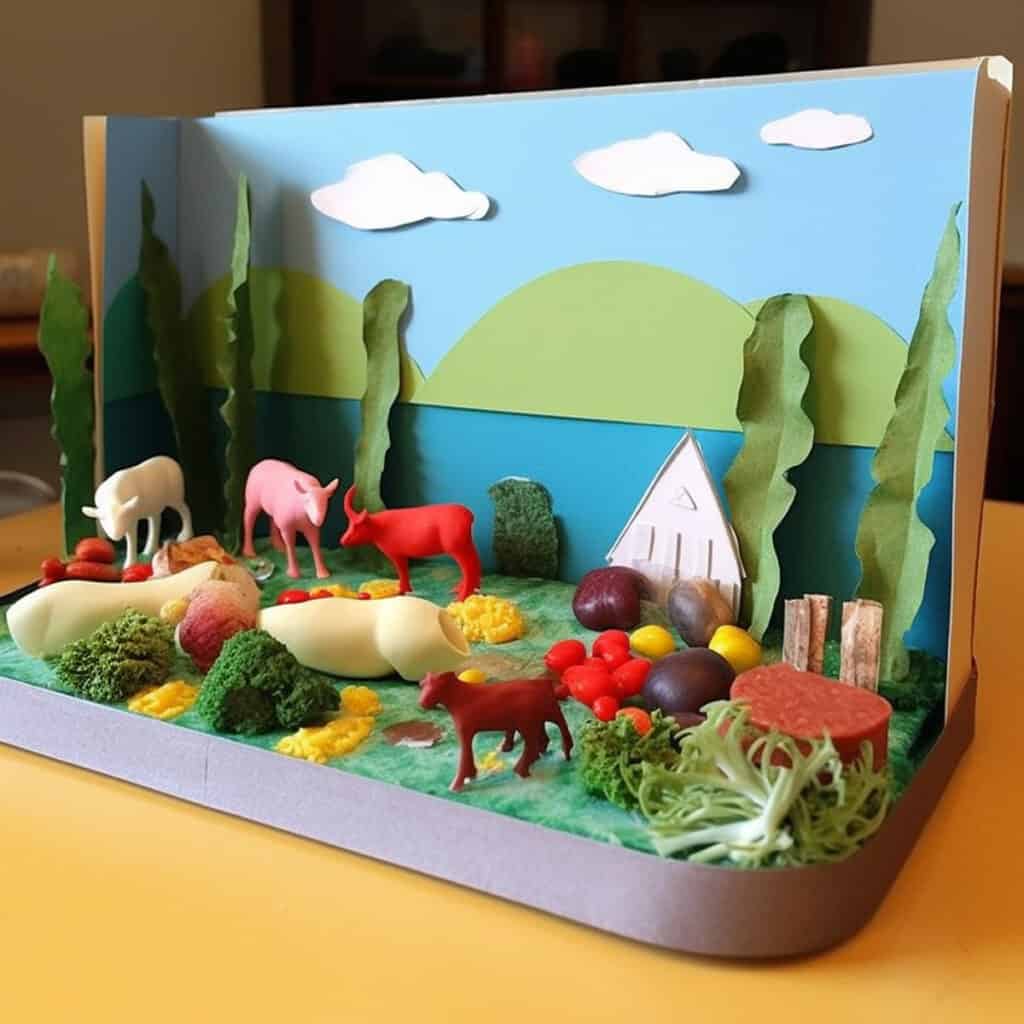
Equipped with a variety of art supplies, including construction paper, plasticine, magazines, paint, as well as everyday objects, students tap into their creativity to vividly portray the selected scene, making it tangible and visually engaging.
There’s so much fun and learning going on here!
Engaging in this hands-on activity nurtures students’ artistic skills and also deepens their comprehension as they depict key elements from the story.
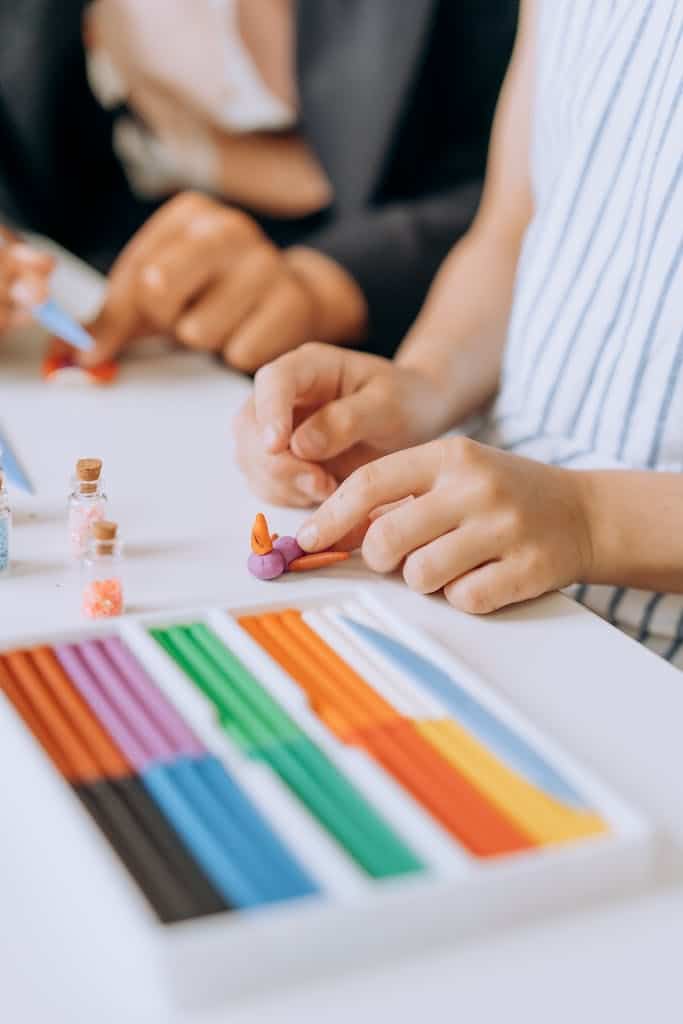
Transforming the traditional book report into a multi-sensory experience sparks a love for literature through creative expression.
8. Paper Bag Book Report
Explore the world of literature creatively with a paper bag book report. This hands-on project combines artistic expression with literary analysis, offering students an interactive way to represent their learning.
In this unique approach, students take a simple paper bag and turn it into a representation of the book’s key elements.
Students showcase artistic talents by recreating the book cover on one side of the bag. The back features a brief plot summary for a quick overview.
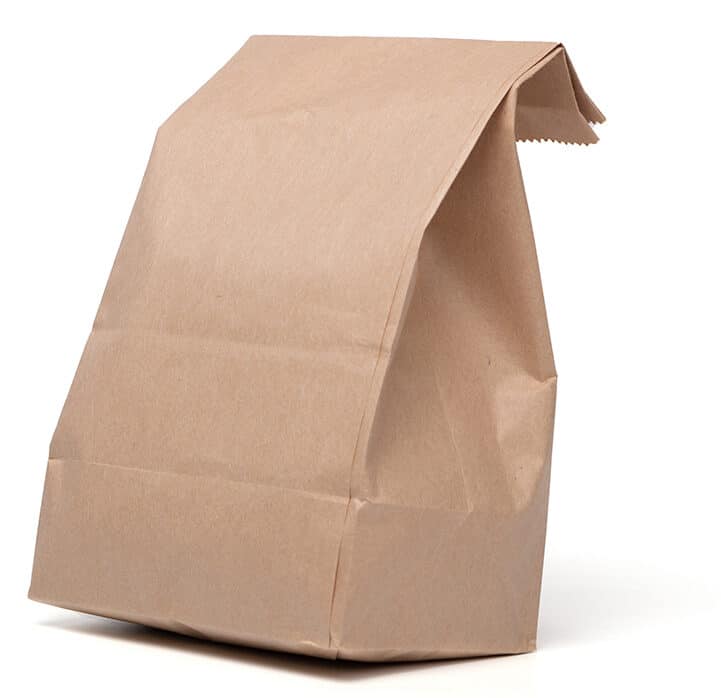
As students continue their exploration, one side of the bag is dedicated to listing the characters in the story. On the opposite side, students outline the overarching theme of the book.
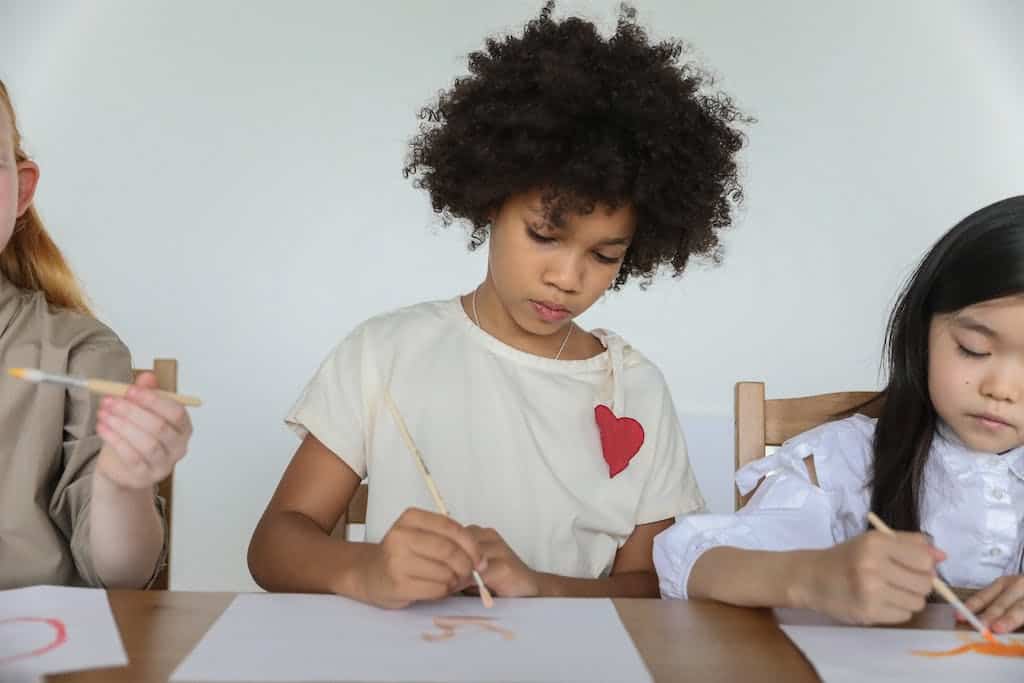
To add a tangible and personal touch, students fill the bag with carefully chosen artifacts that symbolize significant elements from the plot, characters, or themes.
This unique activity not only sparks creativity but also encourages thoughtful reflection, making it an ideal addition to your repertoire of book report ideas for 5th grade students.
9. Book Scavenger Hunt
Another engaging book report idea is to have 5th graders channel their creativity into designing a scavenger hunt inspired by the book.

This activity taps into their comprehension of the plot and characters and also encourages them to think critically about the story.
The process involves identifying significant locations, events, or items from the book and incorporating them into the scavenger hunt checklists or clues. This tests understanding and sparks imagination in weaving the story into challenges.

Creating a scavenger hunt instills a sense of responsibility, as students must ensure that their peers can navigate the adventure they’ve crafted. A scavenger hunt is a fun activity for everyone!
💡 Printable scavenger hunts for hassle-free learning!
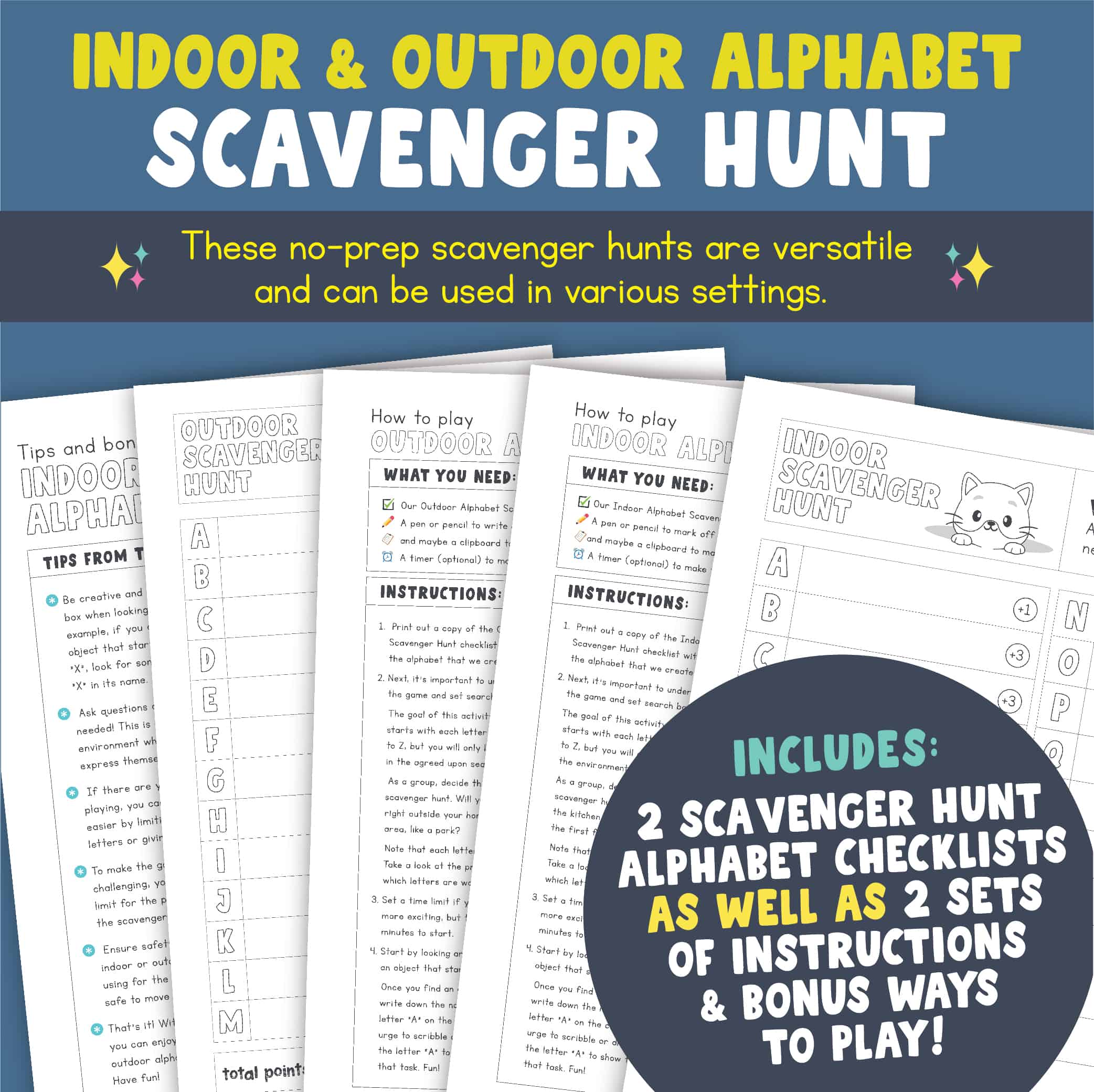
10. Book Character Trading Cards
This unique activity is a captivating spin on traditional book reports tailored for 5th graders. In this interactive project, students unleash their creativity by making trading cards inspired by characters from the book they read.
Whether mimicking the style of hockey trading cards or adopting the charm of Pokemon cards , students have the freedom to design these cards to match their interests. Each card becomes a canvas for vibrant images, character names, essential traits, and concise yet captivating descriptions.
This activity fosters artistic expression while allowing exploration of character traits in an engaging manner.
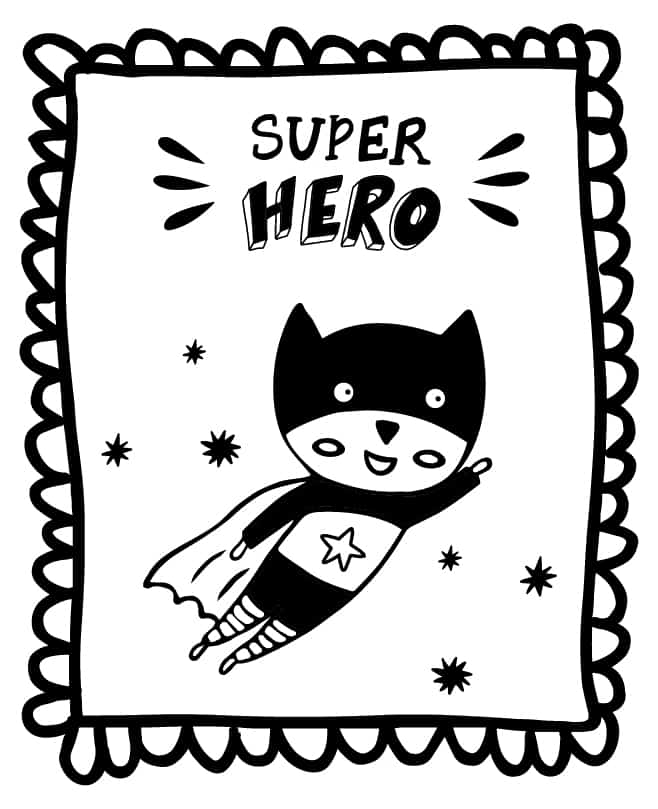
Elevating the book reporting experience, this hands-on project not only engages students but also adds an artistic flair to your collection of book report ideas for 5th grade.
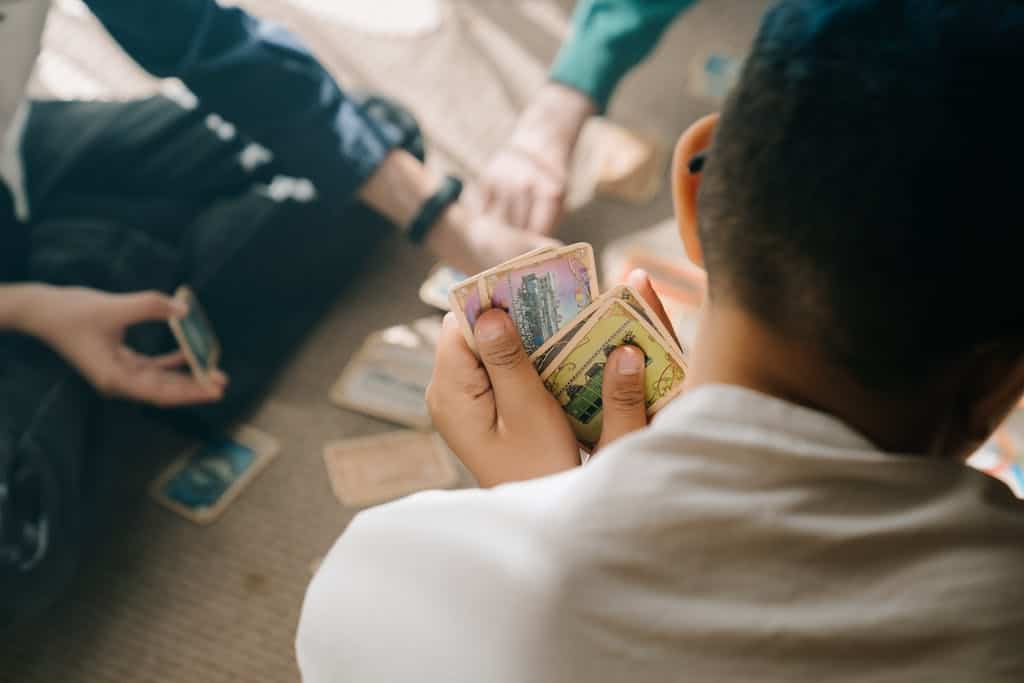
11. Create a To-Do List for the Main Character
This book report activity blends literary exploration with practical life skills. Students will step into the main character’s shoes and write a to-do list, considering their goals, desires, and motivations.
As students delve into the intricacies of a character’s psyche, they not only sharpen their analytical skills but also cultivate crucial life skills, fostering personal growth and preparing them for success in various aspects of life.
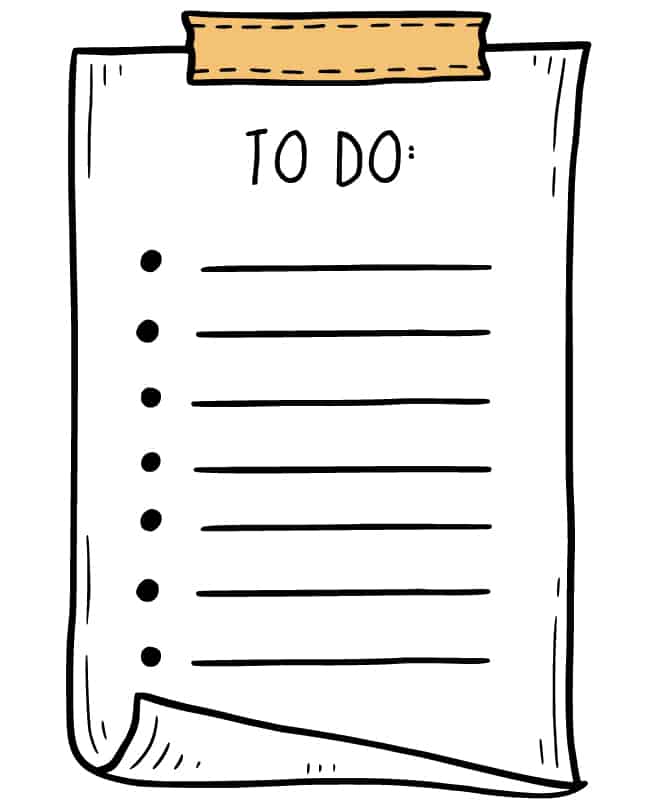
My students enjoyed diving into the main character’s life by creating to-do lists for a day, week, or month. It’s a simple yet effective way to connect with the story and gain deeper insights into the character’s experiences.
Thinking deeply about a character from the book while making practical to-do lists for that character helps students develop a more clear understanding of their complexities, providing a valuable bridge between literature and real-life tasks.

12. Build a Timeline of the Book
Engage students in the literary journey with a book timeline project. Encourage them to create a chronological display of key events from the story, whether on a long strip of paper, with 3D objects, or through digital tools.
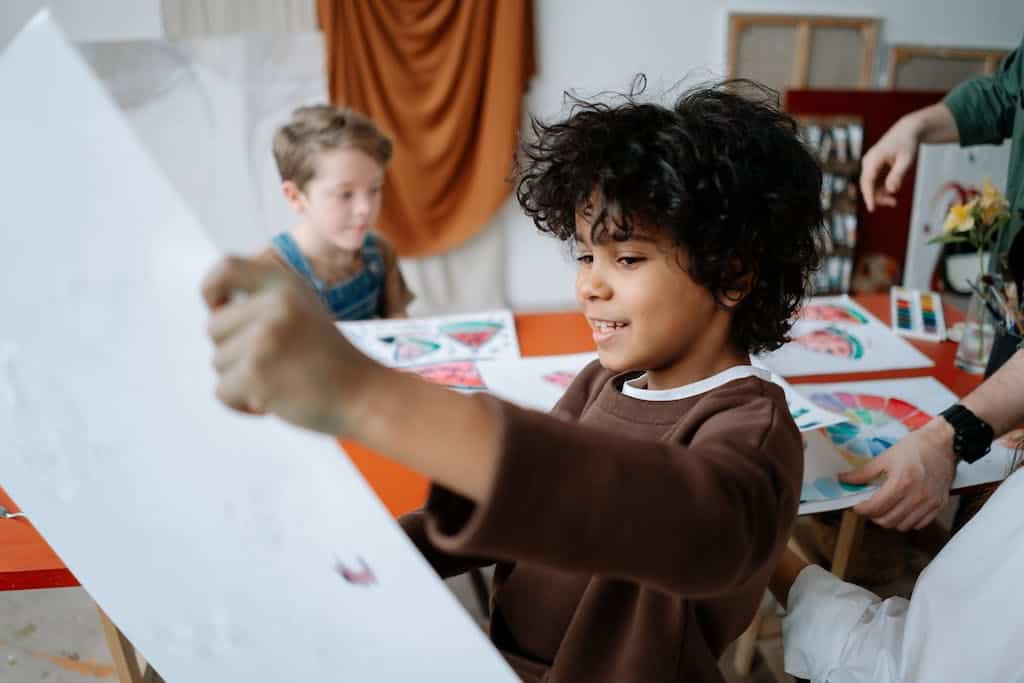
Enhance their comprehension by incorporating illustrations or visuals for each event on the timeline, providing a comprehensive overview that reinforces their grasp of the book’s plot progression.
This creative approach not only hones organizational skills but also fosters a deeper connection to the flow of the story.
13. T-Shirt Book Report
Students can transform a plain T-shirt into a visual representation of the book, employing artistic expression to convey characters and the books theme.
This hands-on approach not only nurtures creativity but also encourages students to delve into the book’s core message, providing a deeper understanding of the story.
In my classroom, students loved having the option to do a T-shirt book report.
I had students recreate the book cover on the back of the shirt, while the front was designed to reflect the attire of one of the characters.
Before painting the shirt, students brainstormed and sketched at least three ideas. This planning phase fueled their creativity and helped them consider how to visually represent their concepts effectively on the T-shirt.
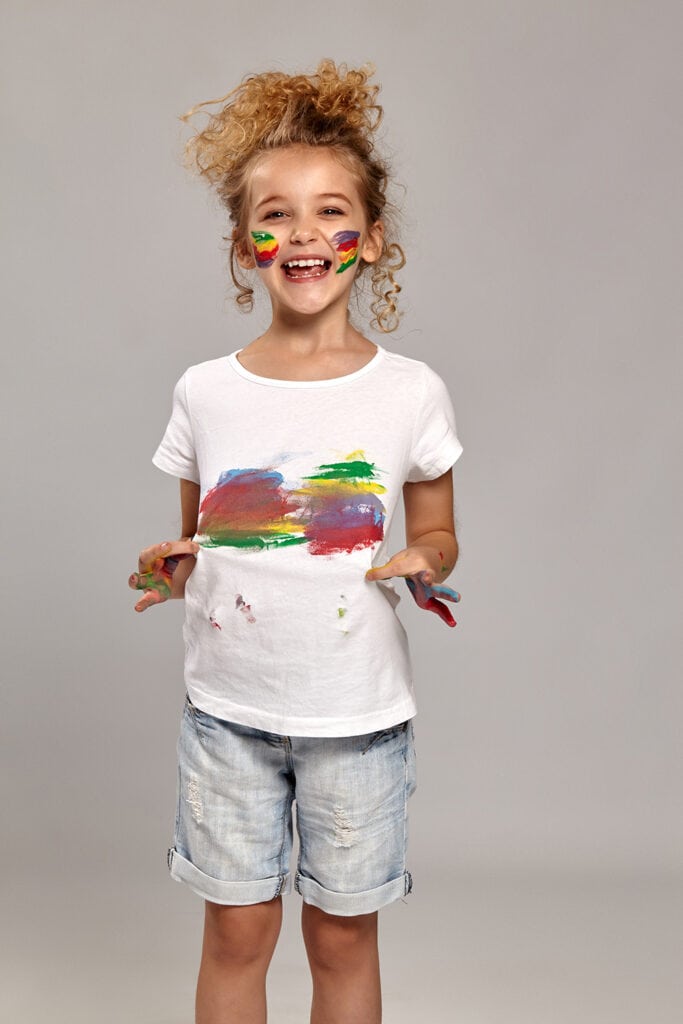
The interactive approach, coupled with the thoughtful planning process, make the T-shirt book report a dynamic and engaging learning experience for 5th grade students.
These alternative approaches to the common book report encourage children to think outside the box and showcase their understanding of the book in a unique and personalized way.
Why Book Reports Are Important in Elementary
Book reports hold significant importance at the elementary level as they serve as invaluable tools for assessing a child’s comprehension and analytical skills.
These reports encourage students to look deeper into the plot, characters, and themes of a book, promoting a more profound understanding of what they have read.
Beyond academic benefits, book reports can nurture creativity and communication skills alongside academic growth.

And on top of that, elementary book reports teach kids about responsibility and following rules as they meet deadlines and guidelines. This helps them develop important skills for future academic tasks.
The Wrap-Up: Book Report Ideas for 5th Grade
These creative and fun book report ideas for upper elementary not only make the learning process enjoyable but also encourage independence and self-expression. By incorporating engaging activities, we can foster a love for reading and storytelling in young minds.
Let these innovative approaches inspire a newfound appreciation for literature, turning book reports into exciting adventures for every 5th-grade reader.
Happy reading and reporting!
More Articles Featuring Fun Reading Activities
Reading Challenge: 100 Places to Read Checklist Printable Rebus Puzzle Guide & Cards Reading BINGO Cards Roll a Story Dice Game Carl the Cantankerous Cat Digital Picture Book + Printable Activity Pack Periodic Table of Elements Digital Lessons Alphabet Scavenger Hunt Printable Word of the Week Math Jokes for Kids and Teachers
Find Great Educational Activities in These Articles
11 Ways to Use Our Roll A Story Dice Game The Ultimate 13 Vocabulary Development Activities for Kids A Great Set of Tricky Rebus Puzzles With Answers Rebus Puzzles for Kids: A Comprehensive Riddle-Solving Guide Classroom Vocabulary Activities: 11 Exciting Post-Picture Book Reading Ideas 31 Fun Summer Reading Activities Elementary Students Will Love The Best Neighborhood Walk Scavenger Hunt and 13 Different Ways to Use It 15 Educational Games With Three Dice for Kids 8 Easy Rebus Puzzles with Answers 27 Educational YouTube Channels to Prevent Summer Learning Loss
Donna Paul, with over 15 years as a certified Montessori teacher, is praised for her engaging teaching style. Beyond the classroom, she's a children's book author and spearheads two impactful blogs with her partner, Karen: thatssomontessori.com for Montessori insights at the elementary level and thenomadicstrays.com for simple road life living. Based in British Columbia, Canada, Donna's nomadic life allows her to share ideas and develop educational products with Karen as they travel. Donna can be found spreading smiles and knowledge wherever she roams.
Book Report Information
1. be sure you finish reading your book several days before your report is due. , 2. see instructions for typed summary and project. see below., 3. pictures of sample projects are at the bottom of this page. .
If project is assigned, we will go over it 2 – 3 weeks before they are due, so students have time to do a quality job on their projects.
2023-24 Dates and topics
Fiction book read as a class. Due November 8. Done on our Class Google Drive.
Biography - read to self, but wor k on report in class. Doc. in Class Google Drive. Due December 19th.
What Should My Report Summaries Look Like?
Book Reports should be around ONE double spaced page. If it's more than that, you are probably adding detail. In 5th grade we are learning to write summaries with major plot points only. The font size should be 12 -14. 5th grade grammar and punctuation expected.
*** No parent typing allowed. Students are learning this valuable skill. You may ask for your parents help with organizing and editing, however. :)
Fiction Book Report Summary Instructions
Student Name
Title of Book
Author of Book
Describe the Plot
The plot includes the major events within a story - key events that move the story along and/or have a significant effect on the main character(s). The plot does not include interesting details. (It’s so hard to leave them out, but they are not needed for a summary. Learning to choose what is important, from what is interesting, is a major life skill.) Be sure to include your favorite part, however.
Determine the Setting
The time and place in which a story's events occur. This is often essential to understanding the meanings of a book.
Tell about Characters and Point of View
The fifth-grade reader needs to consider who is telling the story to make a complete summary. Students then identify the main character and describe how this character interacts with other key characters in the story.
Discuss Theme
The theme of a novel is generally what authors want their audience to "take away" from a reading of their work. What does your child see as the “big idea” of the book? What lesson does the author want the reader to learn?
Book Recommendation
Students are asked to rate their book from 1-10. 10 being the best book they have ever read. This helps others choose books they might like to read in the future.
Auto/Biography Report Summary Instructions
Student Name
Title of Book
# of pages
Name of Person’s Childhood
________ was born in …. They grew up in …. Describe their family. What they were like as a child. Things they liked to do when they were little.
Tell how they learned what they would need to know to become famous/help the world when they grew up. Did they go to school? Did they learn at home? Were they an apprentice?
Why this person is famous
Include at least 5 important facts. What did they do to become famous.
My Opinion
After reading about ______ I think they are famous for a good reason / bad reason. Tell why you think that.
Book Recommendation
I would give this book a
Book Report Project IDEaS Descriptions & Samples
Fiction book of choice idea.
This Book Report project idea is a picture glyph. A picture glyph is a picture in which the picture has meaning by the elements in it. The students will create a picture according to their book and their opinion of the book. The picture should be colored in completely and NICELY (no white on the page even background). Accompanying the picture should be the students summary of the book - see above.
Below is the Glyph Key that is given to the students and photos of some past student work to give you an idea of how it should look.
Present is represented by open eyes.
Past is represented by closed eyes
Future is represented by glasses
City is represented by background buildings
Country is represented by background sunset
Space is represented by background stars
Inside is represented by socks
Outside is represented by shoes
Characters:
Animals are represented by a tail
People are represented by ears
Magical are represented by wings
Problem/Climax:
Person to person is represented by thin eyebrows
Person to Nature is represented by raised eyebrows
Internal struggles (self) is represented by bushy eyebrows
Supernatural (Like Percy Jackson) is represented by angled eyebrows
Mystery/Detective: represented by spyglass in the right hand
Science Fiction/Fantasy: represented by a wand in the right hand
Biography, Autobiography, Diaries, Journals: represented by a pencil in the right hand
Fables, Myths, Legends: represented by a scroll in the right hand
History, Historical Fiction, Realistic Fiction: represented by a feather in the right hand
Sports, Hobbies: represented by a medal in the right hand
Adventure: represented by a compass in the right hand
Excellent is represented by left hand thumb up
Average is represented by left hand thumb to the side
Poor is represented by left hand thumb down
Historical Fiction Book Report idea
One historical report project idea is to make a brochure about the book. Information should be typed! The teacher can show students whow to create a brochure template in their Google Drive.
The brochure should have three sections on the front and three on the back, totaling six sections. There should be no blank sections.
Front : should have the title, author, and number of pages
Other sections : should include a summary, favorite part, rating, and anything else you may wish to share.
Three pictures : must be hand drawn by the student. (Additional clipart, stickers, and fru-fru may be added). As always any additional questions please ask your teacher.
Newberry Book Report idea
The Newberry Award is given to the author of the most distinguished contribution to American literature for children. One project idea for this book report is to create a map relating to the setting of the book and the events that take place. The map should be on an 11×18 piece of art paper that is given to each student. The teacher will give students an instruction sheet.
MAP REQUIREMENTS
11×18 art paper
Map includes title and author of the book (written legibly)
A map key of story symbols
Must be colorful and printing in dark colors
SUMMARY REQUIREMENTS
See top of pageFiction Summary instructions link
PRESENTATION
Eye contact
Voice projection
Organization
Grab Bag Book Report idea
BAG : For this book report you will need to find some type of bag or container to put items in that represent the story structure of your book. This bag/container should represent your book as well. Appropriate bags could be a duffle bag for an athlete, suitcase if the main character is on the move, lunch boxes and backpacks are great for characters who attend school. Baskets, pillowcases and gift bags may work as well. Have fun and be creative! Your bag should have the title on it, the author, and some type of illustration (draw, tape, pin, glue). CONTENTS : Inside your bags should be items to represent the story structure of your book.
SETTING: The setting of a book is when and where it takes place. Include one item to represent the setting.
MAIN CHARACTER: Who the book is about; the most important person in the story. Include two items representing the main character.
PLOT: The storyline or main events in the story. Include two items for the plot.
CONFLICT: The problem that the characters have to work through. Include one item for the conflict.
Person to person
Person to Nature
Internal struggles (self)
Supernatural (Like Percy Jackson)
*SUMMARY : As the summary - include a paragraph for each of the items in your bag. Do not forget the rating and favorite part.
Autobiography/Biography Book Report idea
Most Autobiographies and biographies at a fifth grade level are less than 100 pages. That is OK. If you need to find more information about your person, you can research information on the internet. Here is what is expected for the presentation:
1. Students will dress up like the person they have read about. This is to be real simple. We do not want you spending any money on this project. It can be as simple as wearing a baseball cap, glasses, a jersey, or holding a prop, like a bat.
2 . Students must also DRAW and color a portrait of the person they read about.
3. See summary instructions link at the top of this page.
Become the Book Book Report idea
After reading your book, make a poster that could be a cover for that book.
Imagine that you are the book and plan a way to introduce yourself.
Make the group feel they would like to know you better.
Are you funny? Do you contain a loveable animal? Are you mysterious? Who wrote you? Will they learn something interesting by knowing you better?
*Summary - Organize your best points into a 5-paragraph essay to present to the class on “Why We Should Read You.”
Be sure to “wear” your cover!
Sports and Adventure Book Report idea
See YouTube video with instructions. You don't need to use a special die cut machine. Just fold, cut and weave. Have fun!! https://www.youtube.com/watch?v=ImzcwQ2CUOc
You will make a pre-folded flip book to complete your book report on. It is kind of like a pamphlet with hidden compartments. You are to put the title on the front and color it nicely- I am really looking for neat work. I want to see that you took time in your drawing and coloring. On the inside, attach your: summary, favorite part and rating. In order to get the typing in the right format you will need to choose landscape and 3 columns. This will allow it to fit in the space provided. If it takes more than two columns to type the information, just layer the information (see bottom picture below). The key to this project is there is a hidden side in the middle of the front and back sides of the flip book. You will need to draw a total of 5 pictures/sides of the pamphlet including the front to get full credit. These pictures can be anything that pertains to the book. The pictures and coloring should take up the whole page as well. I am not looking for masterpieces, just time, effort, and neatness.
Summary and 5 pictures. Your teacher can show you examples. Don’t wait until the last minute on the pictures, they are time consuming.
Mystery Book Report idea
Mystery Books are a fun genre. We hope you enjoy the suspense and thinking these types of books offer that keep you turning the pages. For this book report, we want you to make a newspaper article about the book. First, think of a catchy name for your newspaper. Then think of a good headline for your story. All newspaper articles should answer the who, what, when, where, why, and how about the article. Remember to write this in 3rd person as a reporter reporting what has happened. You may want to include some first hand accounts or quotes from the characters in your book as well. Be Creative! Have Fun!
*In place of Summary - You will write a news article using the 5 w’s and how. (Who, What, where, when, why)
Name your newspaper and include the title at the top of your news article.
News article is written in 3 rd person. (From the point of an outsider looking in.)

Fiction Book of Choice idea
You will complete 3 small projects from a possible 9 given on a tic – tack- toe handout that your teacher will give you.
1. Make a new book jacket; write a summary of the story for inside of your book jacket.
2. Make a Venn Diagram showing the similarities and differences between the Protagonist and Antagonist.
3. Write 2 cinquains about the book.
Line 1: 1 Word: Noun 1 2 3
Line 2: 2 Words – Describe the Noun 4 5 6
Line 3: 3 Words – ending in -ing 7 8 9
Line 4: 4 words – thought or feeling about
Line 5: 1 word – synonym
4. Make a picture collage of main characters in the book. (Pictures must be drawn not taken from magazines or computer, minimum of 6 pictures).
5. Make a time line to show important events. Were there any loose ends in this story that were not tied up to your satisfaction?
6. What do you think was the theme or moral of this book? Make a book mark to illustrate this theme/moral.
7. Did your character have a conflict with…
1. Another character in the book – describe an example of the struggle.
2. Nature – describe an example of the struggle.
3. Rules, laws, or customs – describe an example of the struggle.
4. Himself/herself – describe an example of the struggle.
8. Write a story that is a sequel. (A sequel tells what happens next). Be sure to include a title, setting, main character (protagonist) and antagonist (person or thing causing the conflict).
9. Make a newscast (live, video, or recorded) in which the main characters are interviewed.
Direction: Choose activities in a tic-tac-toe design. You must do three activities in a row. When you have completed the activities in a row – – horizontally, vertically, or diagonally—you may decide to be finished, or you may decide to keep going and complete more activities for extra credit.
See pictures of examples below...
student examples below
Glyph and fiction summary.
Trifold Brochure and Summary
Story Map and Summary
Report in a bag and Summary
Biography Dress up, Portrait, & Incident with Summary
Become the Book Cover and Summary
Flip Book with Summary - typed in margins
Create Your Own Newspaper - 5 Ws will create Summary
Tic - Tack - Toe and Summary
Over 6,200 homeschool resources and growing!

33 Free Book Report Forms and Templates for Kids
Published: April 11, 2019

Contributor: Annette Breedlove
Disclosure: This post may contain affiliate links, meaning if you decide to make a purchase via my links, I may earn a commission at no additional cost to you. See my disclosure for more info.
I loved writing book reports growing up. My kids, however, do not share the same sentiment. They love to read books and retell the stories to me, but they have a disconnect when it comes to putting it down on paper. That’s why I love using a free book report template to give them a little extra help.

Fun Book Report Ideas
There are many different ways children can share about a book they read other than writing about it. Check out all of these fun ideas:
- Act it out. Young students and even older students may enjoy acting out a story that they read in lieu of writing about it.
- Make a 3D diorama . This is a great way for students who like to work with their hands and create visuals.
- Draw it out on a poster . For young kids who don’t have strong writing skills yet, drawing out what they read is a great option.
- Make a comic book with a free comic book template we have included below.
- Oral narration . Narrating back a brief summary of the book they read is another alternative to writing a book report. You can see if your children comprehended what they read or at least got the main points of the story by asking them basic questions about the book.
Types of Book Reports
If you prefer using book reports, they come in a variety of types and styles. You can write plain-Jane ones or get a little more creative, like the comic strip option below for a different way to format a book report. Whichever you choose, having the option to use a book report template can be helpful for kids.
While I enjoy book reports and see their value, I much prefer my kids enjoy reading a lot of books and sharing, over the finer points of proper form. So if we can use a simple book report template to keep them excited about reading and not dread the reports, I call that a win-win.
Mix it up with the different types of book reports that you assign to your children. Keep it fun and engaging and they will want to read more books and tell everyone about what they have read.
Using Book Report Templates
As with anything we print out for school, I like to find cute printables with book report designs and age-appropriate graphics. This is especially for my middle school-aged daughter, who thinks some of the free worksheets I find are too childish.
Using a book report template for 3rd grade might look a little different than what I’d want to use for 7th grade. A pdf book report template for high school students definitely needs to be less kid-friendly and more informative.
There are simple book report templates for beginning writers and more advanced ones. The options are endless when it comes to choosing a book report template for your homeschool children.
Printable Book Report Forms
Whether you are looking for a short book report template or one for high school, book report templates will help students get their thoughts on paper. They will learn to organize their thoughts so that their finished book report project is a success!
Book report templates can encourage all the readers in your homeschool to crank out an organized, thorough book report that they are proud of! Once you select a free template, you can get started. Let your children choose one of their favorite books for their first report as it will help to keep them engaged.
How to Use a Book Report Template
When you are looking for the perfect book report template, keep in mind the age of your child. Some one-page forms are perfect for young children and beginning readers with boxes to draw, lines to write down main characters, setting, the plot, etc.
When you have a high school student needing to write a paper or a book report, you obviously need something more in-depth. A book report template can help them get their ideas on paper well enough to organize thoughts and personal opinions for an essay, or even a research paper.
The key point of using worksheets for book reports is to have an easy way to get thoughts on paper. A book report template can help your student stay organized so they are able to draft a well-written paper. These types of graphic organizers make book reports a breeze!
What’s included in a book report?
- A good book report will consist of the book title, author’s name, main idea, main theme, plot points and important details.
- It will explain the narrative and setting, and cover the main elements of the story as well as describe important characters of the book.
- You’ll also want to include details on the time period, major conflicts and the book details, or rather a plot summary of the book.
- Don’t forget to include unusual facts and key elements that stand out.
Character Description
Besides adding basic details about the key characters in the book, it’s a good idea to include character details. You will want to include details such as; appearance, interests, and list out some adjectives that describe characters on the book report form .
Analyze what your character looks like so the reader of the book report gets a vivid description of the character. What color is their hair and skin? What is their clothing style like? Do they have a best friend or an animal that is constantly with them?
Is the character an animal? If so, what type of animal are they and what do they look like?
Character Development
Characters develop on in the story as you read about them. Make sure to make note of positive and negative character traits and how those change throughout the plot. Is there a hidden message or reason why the character is behaving the way that they are?
Make notes of how your character has changed and why you think they changed and the reasons for the actions that they took. You can take it a step further and explain how their actions either harmed or helped the story to move along.
Printable Book Report Templates and Forms
If you want a book report template quickly, simply scroll to the bottom of this post to download ours FREE.
DIY Book Report Kit {works with ANY book} This printable book report template is more like a graphic organizer , in my opinion. You can print several different template pages to organize different aspects of the book so you can create a great book report.
Free Book Report Template for Elementary Students Get your 1st -4th graders writing book reports with ease with these pdf book report pages.
Book Review Templates This cute pack of 5 different book report template pages would be perfect for early learners who know how to write .
Printable Book Report Form I like this simple book report template that’s perfect for a new reader. The free printable book report template is organized and will prompt your kids to be creative.
Elementary Book Reports Made Easy An easy one-page pdf download of a book report worksheet that would be good for elementary students.
Printable Book Report Forms (Non-Fiction, Fiction, Biography, Mystery & Fable) You have lots of different options for book report templates. Whether or not you need a book report form for a biography, non-fiction resource , or even a fable, there are several different pdf templates to choose from. There are also multiple book report poster forms for those kids who prefer to draw.
7 Different Versions of Book Report – If you are looking for different versions for different age levels or grades then these reports are worth reviewing.
Easy Book Report – This features an easy form for younger students as well as outline form for older students.
Book Report Templates for Younger Students
There are different styles of book report templates that you will want to focus on for younger students. A book report template that you use with your middle school aged child will be too difficult for beginning writers.
You will want to look for a book report format with dashed lines, boxes to draw a picture in, and more.
My Book Report Worksheets These book report worksheets are suitable for children in kindergarten or first grade.
Comic Strip Book Reports If you have a reluctant writer , or a comic book lover, these free printable comic strip book report templates will likely make a book report less dreaded!
Reading Logs and Bookmarks
Reading Log and Book Report Templates If you are on the hunt for cute reading log printables, these are perfect for elementary students. There are a few different templates that offer options to rate the book and write a review. Using a creative book report template like this might take the sting out of writing book reports for reluctant writers.
Free Reading Log and Book Report Forms My Joy-Filled Life has a 2-page book report template and a printable reading log that you can slip into your homeschool binder .
Free Reading Logs, Bookmarks and Charts – Encourage your readers with fun and colorful bookmarks and charts that they can use to track their reading time as well as the books they have read. Free Instant Download included!
Book Report Template
Book reports don’t have to be boring or something that your children dread. They may be overwhelmed because it is a new thing that they have never done before and may need just a little guidance to get started.
Our FREE DIY Book Report template pack includes four pages of graphic organizers, question prompts, illustration boxes, and more. It is a great start to guiding your children on how to write a book report in a non-threatening way.
You can download it for free in our subscriber library .
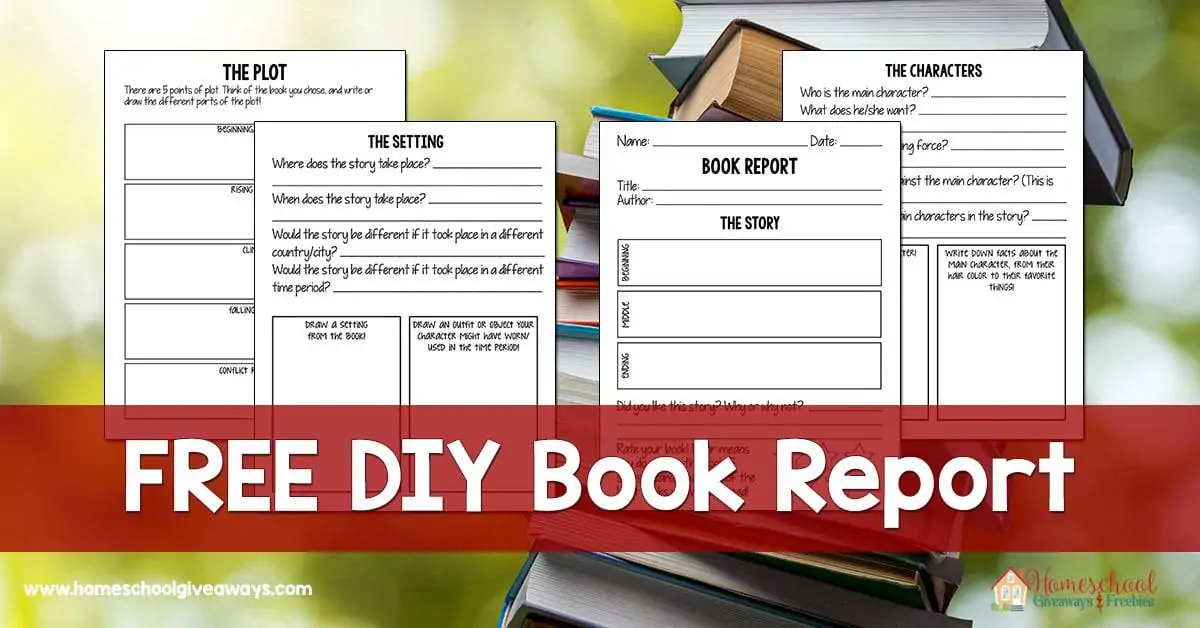
In Conclusion
The body of the book report should include the title, the author of the book, characters, setting, major conflicts, direct quotes, and plot. The conclusion can include a personal opinion. Book reports are a fun way to develop critical thinking skills and teach students how to gather information to format into a writing assignment.
Annette Breedlove
Annette has been married to her husband and best friend since 2003. Together they are raising their six children to follow the Lord’s will, no matter what. Annette longs for the day when she will meet her angel babies who have entered heaven before her. She enjoys creating UNIT STUDIES and FREE PRINTABLES for homeschool families. You can follow her crazy life at In All You Do where she blogs about homeschooling, homemaking and marriage while trying to maintain her sanity. She is also the owner of Thrifty Homeschoolers where she shares her tips on homeschooling without breaking the bank.
Related resources
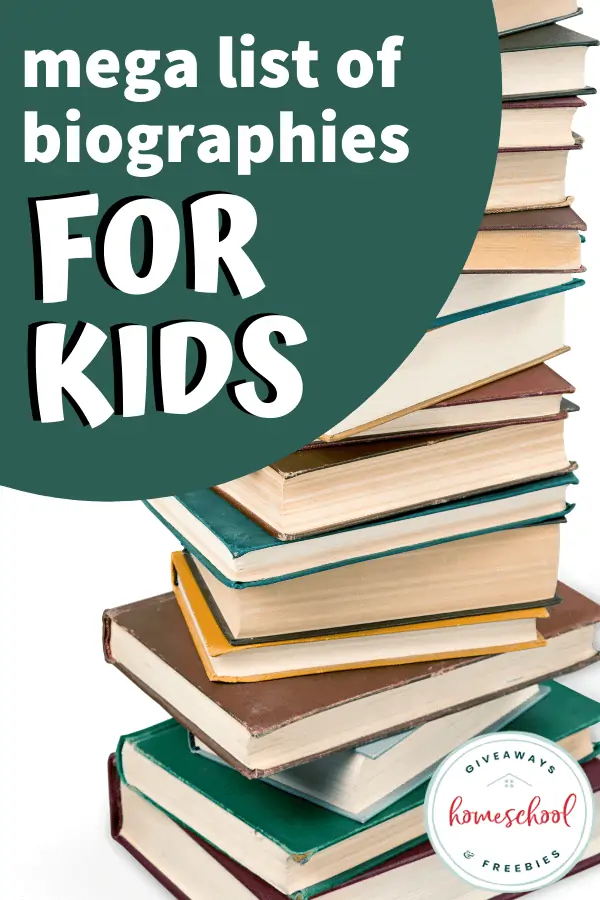
Mega List of Biographies for Kids
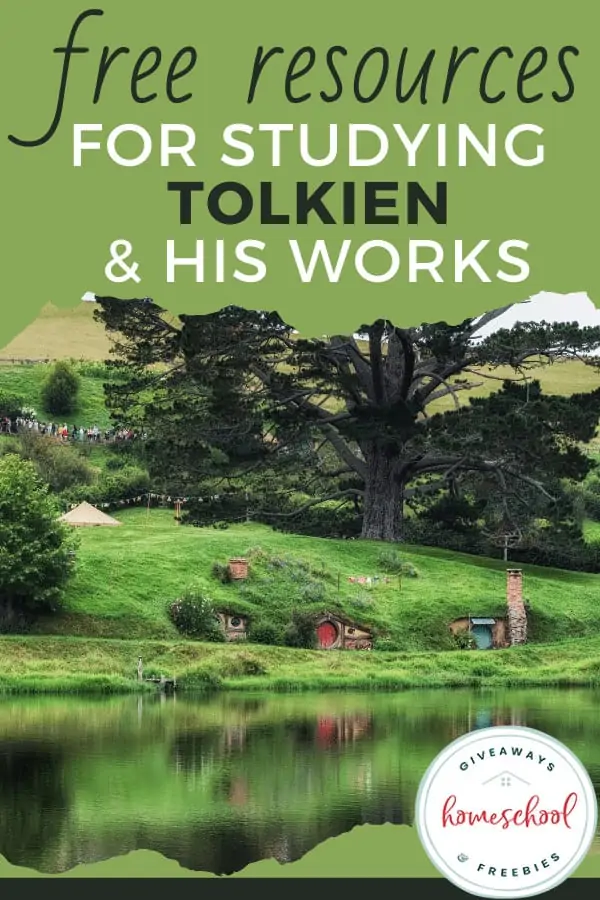
Free Resources for Studying Tolkien & His Works
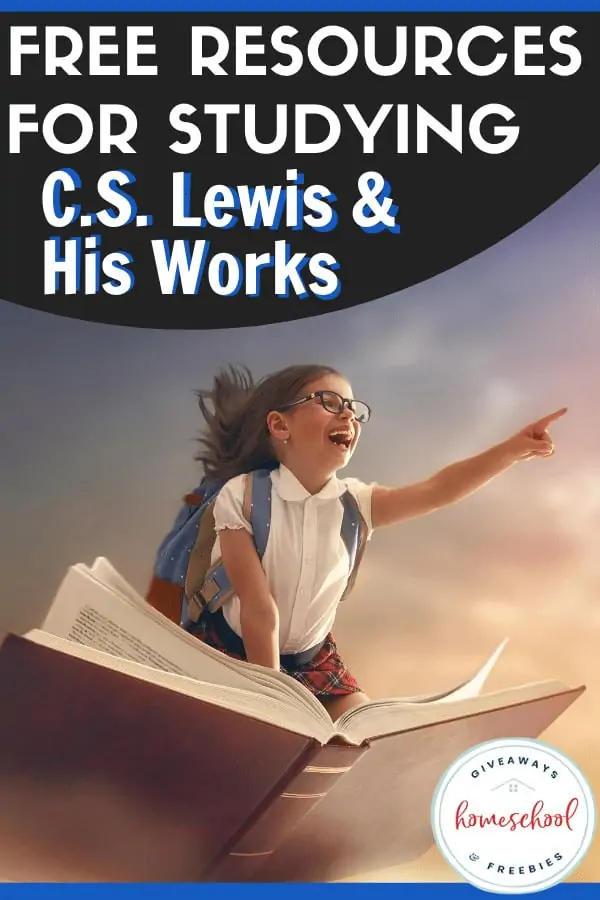
Free Resources for Studying C.S. Lewis & His Works

Tales from a Teacher’s Bookshelf + FREE Hardcover Book (Limited) & Giveaway

Mega List of Mystery Books for Kids
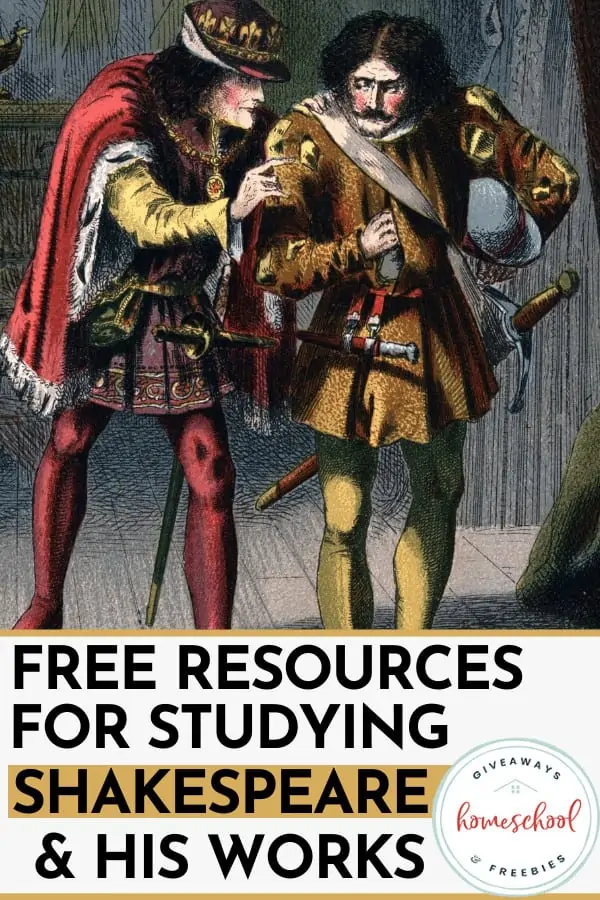
Free Resources for Studying Shakespeare & His Works


Project-Based Learning
- Classroom Decor
Seasonal and Holiday
- Social Studies
Teacher Tips
- Blog , Reading
10 Book Report Ideas That Kids Will Love
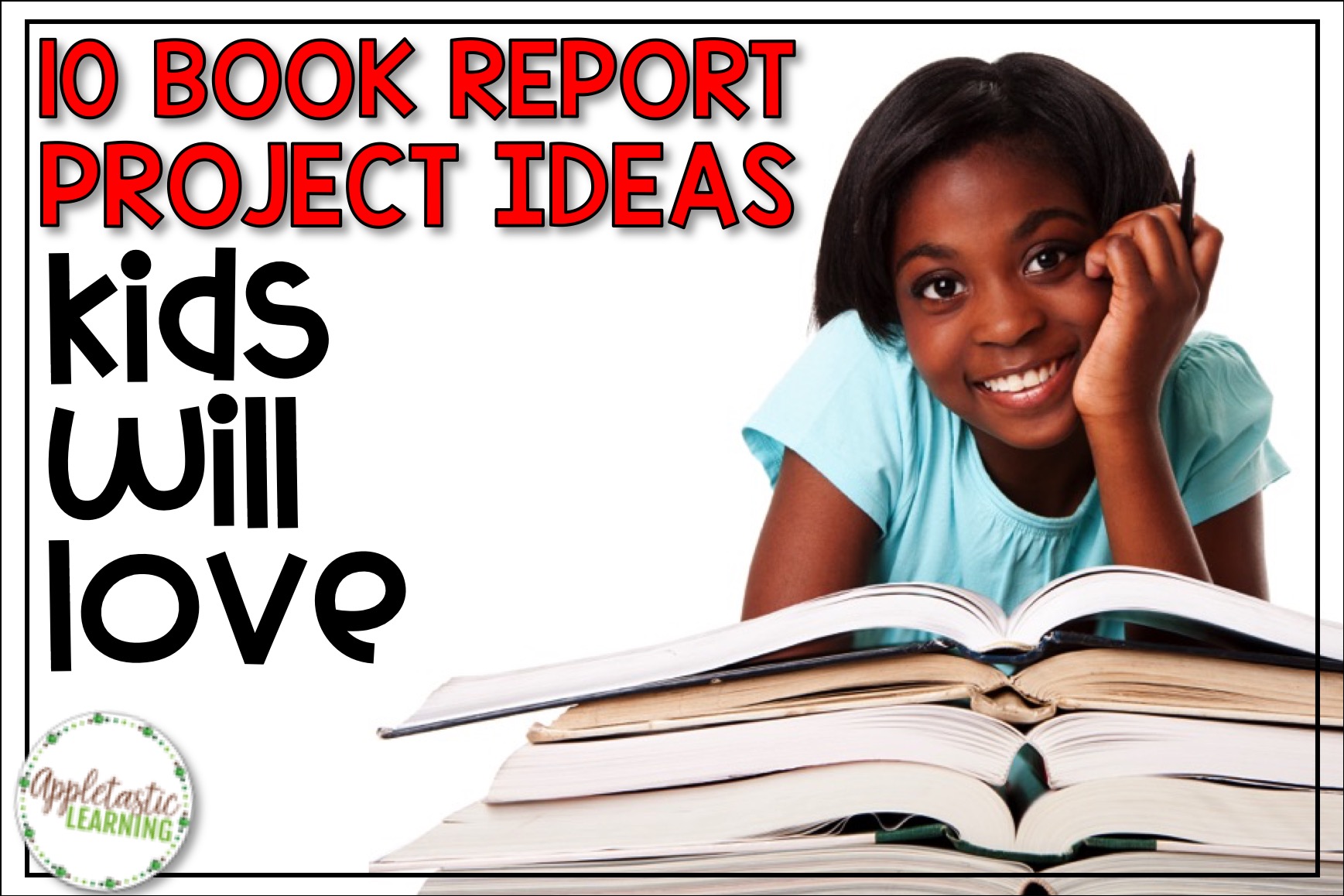
Share this Post
Fun book report ideas for fourth, fifth and sixth graders.

Book reports don’t need to be painfully boring. In fact, they can be a ton of fun, and with the right project, students will love the entire process of creating and sharing meaningful book projects. There are loads of great book report ideas out there just waiting to happen in your classroom!
Here are 10 book report ideas that kids will love:
1. cereal box book report.
These oh-so-cool reports were always the top-ranked project by my fifth graders. Students loved creating an original book report display using a covered cereal box and ready-made templates. The finished projects made a great classroom display, and students loved looking at their classmates’ creative reports. Read more about Cereal Box Book Reports HERE .

2. Paper Bag Book Report
This is a super simple idea that is quite fun for students. Provide each student with a lunch-sized paper bag. Tell them to think about 5 objects that relate to the main character of their book . The objects have to be small enough to fit into the bag . Send the bags home and have students place the 5 objects in the bag and bring them back to school. On the day they are due, have students take turns sharing the objects in their bags and explaining how they relate to the main character of the book. You can even make a great display with the bags, objects, and books to pique the interest of other students.
3. Character Day
Have students dress up as the main character of their book. Then, have each student take a turn standing in front of the class and telling their character’s story in first person point of view.
4. Book Report Lap Book
you need are two file folders, some cardstock or construction paper, scissors, glue, and the FREE book report template found here . The finished products are quite amazing, and your students will probably keep theirs forever! Check out my photo tutorial for making a lap book .
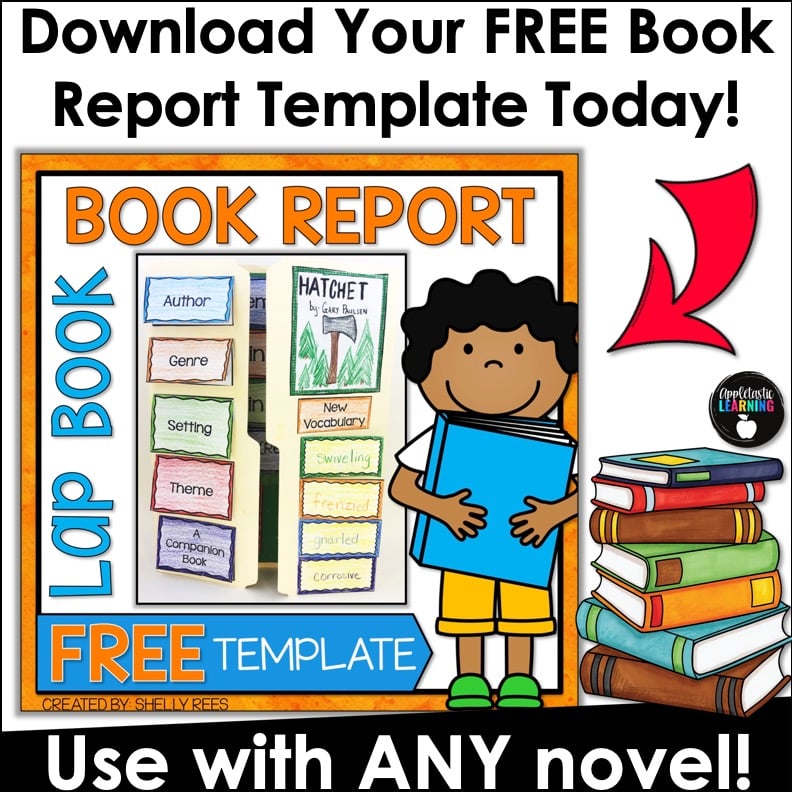
5. Book Scene Diorama
Have students construct a diorama of one of the main events of their book. They will make a 3-dimensional scene, including models of characters, the setting, and objects. A shoebox makes a great place to build a diorama. Require students to write a description of the scene.
6. Book Report Posters
This might be the easiest option of the book report ideas. Have students first sketch their posters on a sheet of notebook paper. Then, provide students with a large piece of poster paper or chart paper. Posters must identify main characters, setting, title, problem, and solution. Display finished posters in the classroom or on hallway walls.
7. Book Report Mobiles
Mobiles are easy to make, and it’s fun to watch students use their creativity in designing their own projects. A paper plate folded in half makes a great base/topper for mobiles. Have students write the title of the book on this paper plate semi circle and hang the mobile pieces from it. Provide students with construction paper, yarn, markers, paper hole punches, and any other materials they might need.
8. Book Report Mini Books
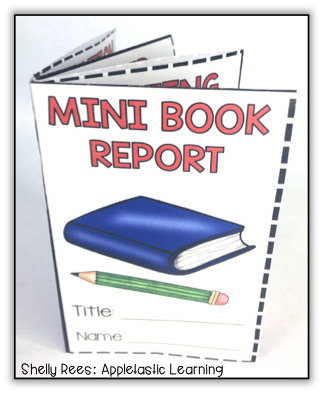
With just one piece of paper, your students can make a complete, creative book report!
In these clever book projects , students identify:
- Title/Author
- Main Character
No tape, glue, or staples required! Photo directions are included in this download.
9. Design a Book Jacket
Show your students several examples of some outstanding book jackets. Point out the front with the title and illustration, the spine and its information, and the back with the book summary. Also show the two inside flaps with information about the author and a smaller summary. Provide them each with a larger piece of paper and have them design a jacket for the book they have just read.
10. Ready-to-Print Templates
Use NO PREP book report templates to save your sanity AND to keep things fun for your students. You could print out all 12 templates in this Book Report Templates Packet and let students choose the one they want to do each month! There is even a really nice digital option for Google classroom included!

Regardless of which of these book report ideas you choose, be sure to clearly outline the expectations before your students begin. It’s best if you can model a project to demonstrate the quality of work your students should strive for.
Keep it fun and engaging, and your students will be excited to invest their time in their projects!
Check out these ready to go, easy to use book report projects in my store:

SAVE THIS POST FOR LATER!
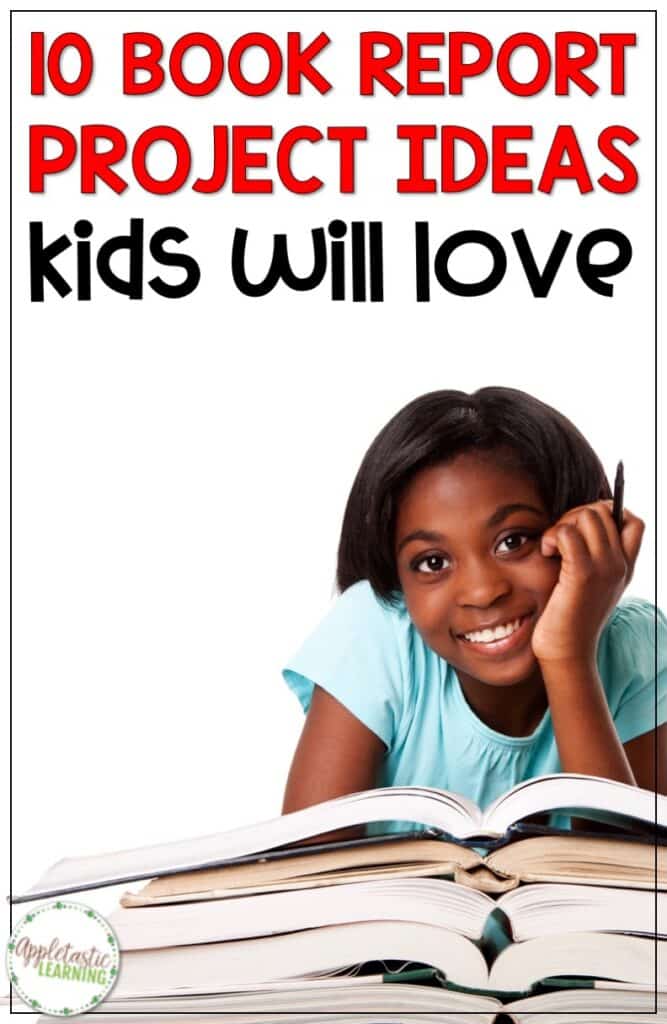
Pin this to your favorite classroom Pinterest board so you can come back for these book report ideas!
To recap, the 10 Book Report Project Ideas are:
- Cereal Box Book Report
- Paper Bag Book Report
- Character Day
- Book Report Lapbook
- Book Scene Diorama
- Book Report Posters
- Book Report Mobiles
- Design a Book Jacket
- Ready-to-Print Templates

Shelly Rees
Hi, I’m Shelly! Thank you for being here. I love helping third, fourth, and fifth grade teachers with fun and engaging activities that require no to little prep! Let me help you by taking some of the stress and work off your plate.
Hi, I'm Shelly
- Seasonal & Holiday
- Teaching Ideas
New Products
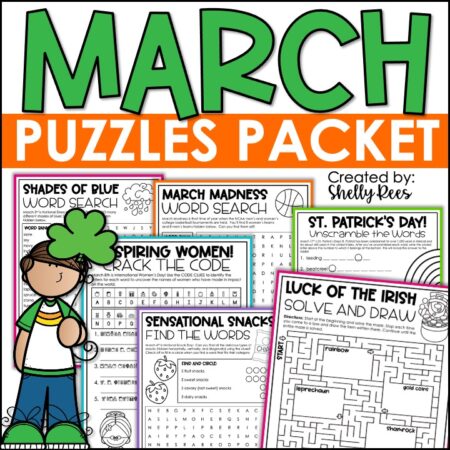
March Word Searches and Puzzles
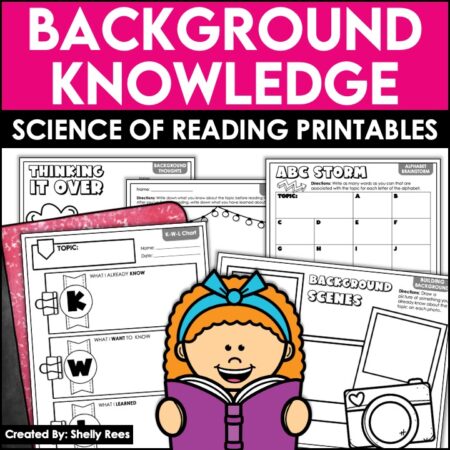
Science of Reading Background Knowledge Organizers
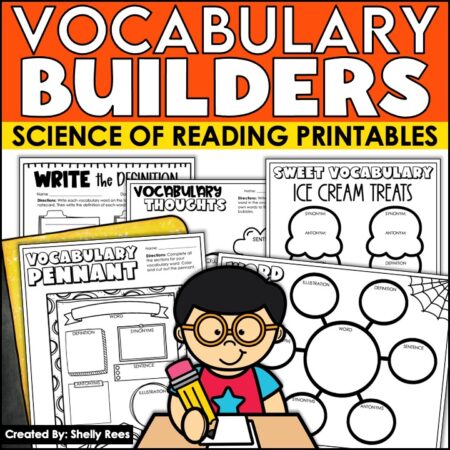
Science of Reading Vocabulary Activities and Graphic Organizers
You might also like.

10 Budget-Friendly Classroom Decor Tips
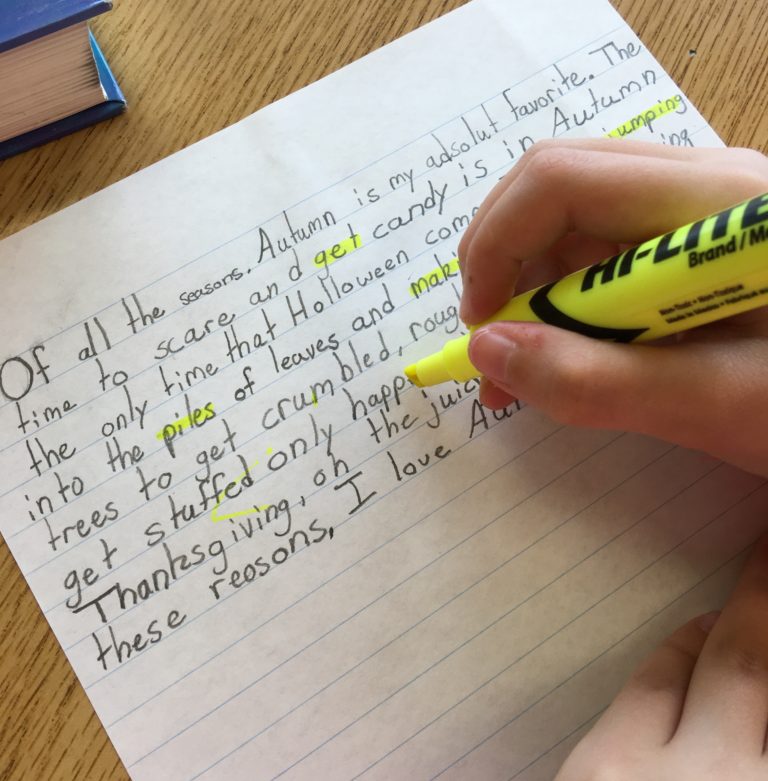
Word Choice – 5 Ways to Expand Your Students’ Vocabulary
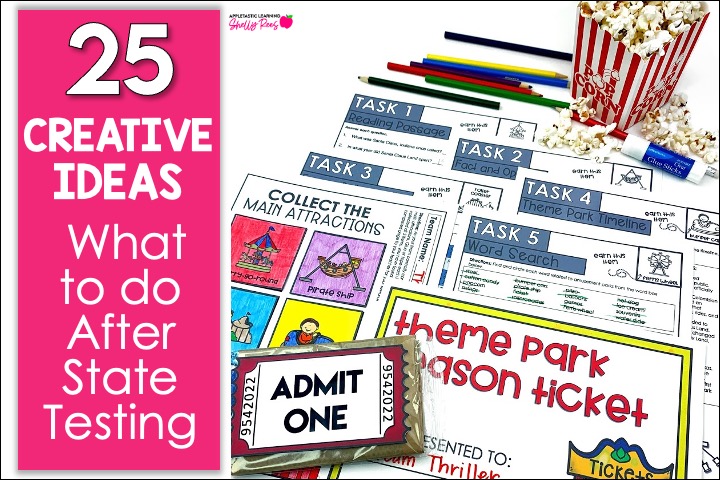
What to do After State Testing – 25 Fun Ideas

4 Constitution Day Activities for Upper Elementary
©2022 Shelly Rees. All Rights Reserved.
Designed by Ashley Hughes.
Seasonal & Holiday
Reading & ela.
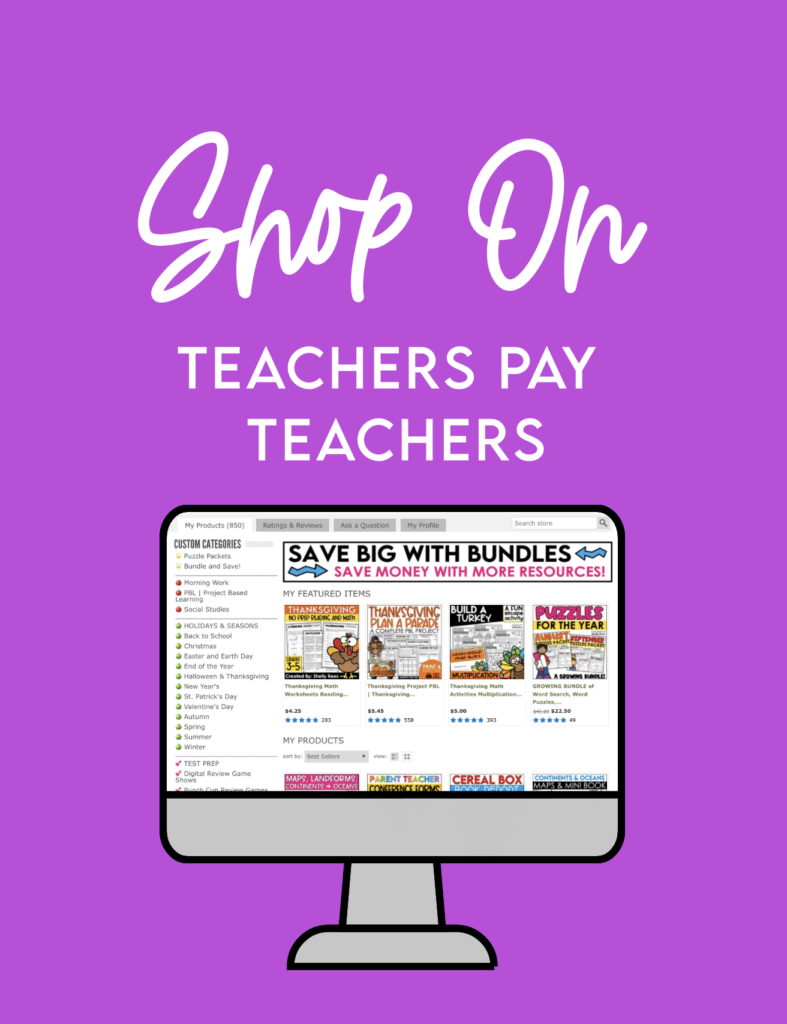
Book Reports Lesson Plan: Self and Peer Evaluation
Submitted by: angela watson.
In this lesson plan, which is adaptable for grades K-12, students use BrainPOP and/or BrainPOP Jr. resources to identify the elements of a comprehensive book report. Students then create a book report and present it to the class. They will also use a class-generated set of criteria to self-assess and evaluate the book reports of peers.
Lesson Plan Common Core State Standards Alignments
Students will:.
- Identify the elements of a comprehensive book report.
- Create a book report and present it to the class.
- Use a class-generated set of criteria to self-assess and evaluate the book reports of peers.
- Computer and projector to watch BrainPOP as a class
- Printed class set of BrainPOP Worksheet
- Printed class set of student-generated book report criteria for scoring and assessment
Vocabulary:
Preparation:, lesson procedure:.
- Brainstorm what students know about formal book reports. What is their purpose? Guide children to understand that book reports are a chance to share stories and information you enjoy, and help other people discover books they might love, as well.
- What do students think makes a compelling report on a book? If students do not have prior experiences with reports, talk about the information they would typically share when recommending a good book to a friend. Share real-world examples of book reports in the form of online book reviews and blog posts, or even clips from the book reports given on the former show Reading Rainbow . Encourage students who do have background knowledge and experience to think of outstanding presentations they've seen and talk about what made them interesting. Record their responses.
- Show either the BrainPOP Jr. or BrainPOP Book Report movie (depending on your students' ability levels.)
- Ask students to consider what they learned from the movie and revisit their original list of book report criteria. You may want to include criteria for being an attentive audience member during others' reports and discuss specifically what that looks like. Students who have more experience with book reports may want to talk about original and creative book report ideas; use the "In Practice" Related Reading page as a springboard for discussion.
- Tell students that they will have the opportunity to create and present a report on the book of their choosing. Explain any deadlines or special instructions you have for the assignment. You may wish to type the class' list of book report components and provide each student with a copy. The list might also include a grading scale that explains how many points each component is worth.
- Provide very young students and/or those who are emerging English readers/writers with the BrainPOP Jr. activity page as a guide for their reports. More advanced students may use the BrainPOP Worksheet to help them organize their thoughts and ideas prior to writing a formal report.
- Check in with students regularly as they read their books and form their reports. Keep the class list of components displayed for student reference. You can use various BrainPOP resources to reinforce expectations and keep students motivated and excited about sharing their reports.
- When students are ready to present their reports, review the criteria for book reports as well as audience participation. Have students assess themselves as well as their classmates through informal class discussion and/or by writing down feedback on photocopies of the report criteria that students generated.
- Display the reports (and, if possible, a copy of the books students read) in your class library to encourage students to read the books their peers recommended. You could also take a digital photo of each child holding his/her report and book and display it online or in the class library as a reminder of each book title and the person who reported on it.
Extension Activities:

- BrainPOP Jr. (K-3)
- BrainPOP ELL
- BrainPOP Science
- BrainPOP Español
- BrainPOP Français
- Set Up Accounts
- Single Sign-on
- Manage Subscription
- Quick Tours
- About BrainPOP

- Terms of Use
- Privacy Policy
- Trademarks & Copyrights
book report 5th grade
All Formats
Resource types, all resource types.
- Rating Count
- Price (Ascending)
- Price (Descending)
- Most Recent
Book report 5th grade
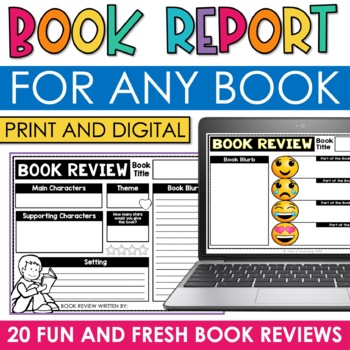
Fiction Nonfiction Book Report Template 3rd 4th 5th Grade Book Review Forms

- Google Apps™
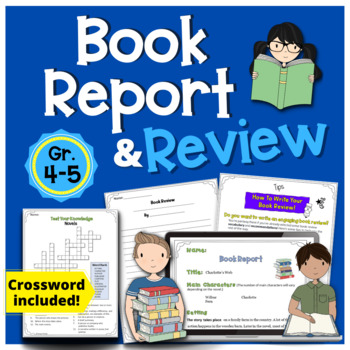
Book Report + Book Review (Novels) 4th- 5th Grade - No Prep Writing Activities

- Easel Activity

Book Report MEGA Bundle! 40 Best-Selling Book Report Templates, 2nd - 5th Grade
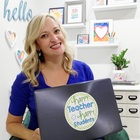
Book Report Rubric - 5th /6th grade

Book - Report -Template-for- 5th - Grade 4th & 3rd grade
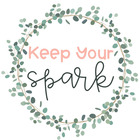
Book Report Bundle #2: 8 Best-Selling Book Report Templates for 2nd - 5th Grade

Biography Book Report : Doodle Style Writing Organizer 3rd 4th 5th Grades

Book Report Templates: BUNDLE: Book Review : Report Projects 4th 5th Grades
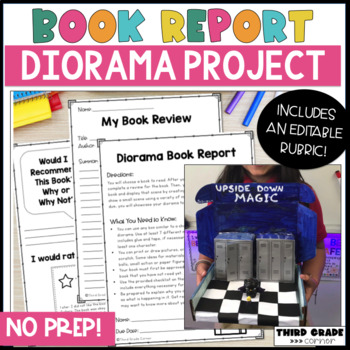
Diorama Book Report for 3rd, 4th, and 5th Grade - Editable Rubric!
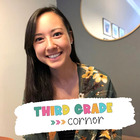
Book Report Bundle #4: 8 Best-Selling Book Report Templates for 2nd - 5th Grade
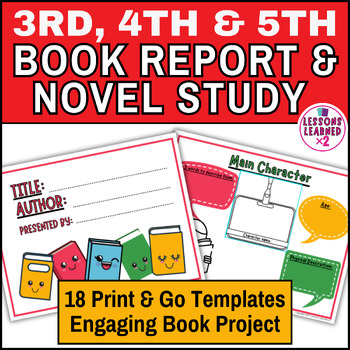
3rd 4th 5th Grade Book Report or Novel Study - Printable Template Project
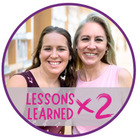
5th Grade Book Report (Fiction)

Book Report Bundle #3: 8 Best-Selling Book Report Templates for 2nd - 5th Grade

Simple Book Report for Kindergarten - 5th Grade

Cube Book Report - Fifth Grade

Book Report Board Game 4th, 5th & 6th grade *
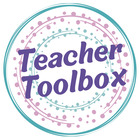
Book Report Bundle #5: 8 Best-Selling Book Report Templates for 2nd - 5th Grade
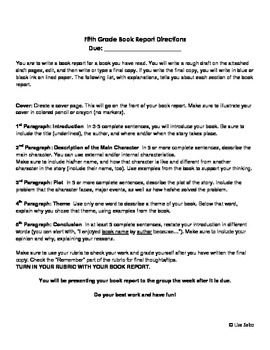
Fifth Grade Traditional Book Report

Orange Level ( 5th Grade ) IRLA Book Report

A Year of Book Reports for 5th Grade

5th Grade Book Reports

Earth Day Book Report April Activities 5th Grade
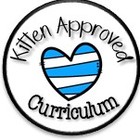
5th - Grade Editable Book Report Form: Rationale/Outline/Questions/ Book List

- Word Document File
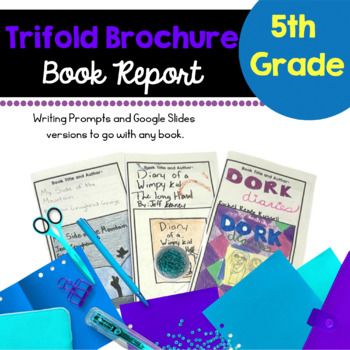
5th Grade Trifold Brochure Book Report

- We're hiring
- Help & FAQ
- Privacy policy
- Student privacy
- Terms of service
- Tell us what you think

COMMENTS
Karen Nolt November 1, 2019. Student instructions for writing a book report in fifth and sixth grade. Includes the number of paragraphs in the report and three or four things to include in each paragraph. Download Document.
This free printable book report form is a great resource for parents, teachers, and homeschoolers to help students work on recalling what they've read, remembering the important parts, while working on writign skills too. This handy reading report template is perfect for first grade, 2nd grade, 3rd grade, 4th grade, and 5th graders too.
2. Identify the main elements of the book. Scrutinize the book's primary components, including its main themes, characters, setting, and plot. These elements will form the basis of your report. 3. Formulate a thesis statement. Compose a thesis statement that encapsulates your personal perspective about the book.
Cover of book report includes students' first and last name, title & author of book, and a handmade or printed illustration of book. RL.5.7. 10 points. Introduction of report includes all required information answers the three questions outlines in the guidelines. Introduction is one paragraph long. RL.5.1-5, RI.5.8 & RI.5.1-5, RI.5.10 &.
Take 14 sheets of blank white paper, (8.5 x 11 inches) and cut each in half vertically. Arrange the now 28 sheets into a booklet and staple them on one side. Choose a character, setting, quote, event, or any relevant word from the book to represent each letter. The word must begin with that letter of the alphabet.
Choose a Book. The first step in writing a fifth grade book report is to, of course, choose a book! In some cases, the teacher will tell students which book they need to read, especially if students are all required to write a book report on a book read aloud in class. They may also tell the students which book to choose based on a certain ...
Print and share this quick reference for how to write a book report - including all of the necessary elements, plus examples and outlines. Looking for fiction and nonfiction titles to assign for book study, reader's theater, or literature circles? Visit our Literature Teaching Guides Hub to find thousands of book guides for all grades.
Students at every grade level can benefit from writing book reports, which sharpen critical reading skills. Here, we've aggregated sources to help you plan book report assignments and develop rubrics for written and oral book reports. You'll also find alternative book report assessment ideas that move beyond the traditional formats.
5th-Grade-Book-Report-guidelines. 5th Grade Book Report Format. Introduction (2-3 sentences, including a "topic" sentence) Include: • The title (underlined) and author of the book. • Why you chose the book (if this applies) or how it fits into our history program this year (if this applies). • What kind of story is it?
The story map is a useful visual tool. Take a piece of paper and write the title of the book in the center. Now draw arrows with different names: author, characters, main ideas, leading problems, conclusions. This will help you quickly move to the next stages of writing.
Take a new spin on your book report assignment with our free book report template printables including a one-pager, choice board, and more! ... Free Book Report Templates: Printables for Grades 3-5 for Fiction or Nonfiction Books. Take a new spin on your book report assignment. 📚😍 .
5th Grade Book Report Templates, Outlines, & Notes. By fifth grade, it's likely your students will be typing up their book reports. This printable book report template will help your late elementary and early middle school students with their book reports. We suggest this format for 5th, 6th, and 7th-grade students.
Explore how these ideas can make reading assignments more engaging and meaningful for students. Table of Contents. Make Book Reports Fun for 5th Grade Students. 13 Creative Book Report Ideas for 5th Graders. 1. Interview the Main Characters. 2. Film a Movie Trailer for the Book. 3.
1. Be sure you finish reading your book several days before your report is due. 2. See instructions for typed summary and project. See below. 3. Pictures of sample projects are at the bottom of this page. If project is assigned, we will go over it 2 - 3 weeks before they are due, so students have time to do a quality job on their projects.
BOOK g REPORT Book Title. Main Characters Main Events. Story Symbolism and Message Important Reference Sources and Pages, Author, Story Setting Main Conflict and Resolution . Created Date: 3/5/2021 12:43:14 PM ...
Book Report Worksheets. Whether you are a parent, teacher, or homeschooler - you will love these no-prep book report templates for children in grade 3, grade 4, grade 5 and even grade 6 students. Children need to practice writing and summarizing the major parts of the book, and ensuring they understand what they are reading, but staring at a blank page isn't going to help your early reader ...
The structure of this will include: An introduction. Summary of the book. Main body of text. A conclusion of the report. Each section of the book report should feature at least one paragraph. Depending on the ability of your class, you may wish to provide a book report outline on the board.
5th Grade Book Reports. Dear Parents, Mrs. Hight's and Mrs. Logston's ELA classes will be assigned book reports each quarter. A specific genre will be assigned for each book report. The books must be within students' reading range based on their zpd range. This can be found on students' STAR Assessments that are given at the beginning ...
Using a book report template for 3rd grade might look a little different than what I'd want to use for 7th grade. A pdf book report template for high school students definitely needs to be less kid-friendly and more informative. ... Book Review Templates This cute pack of 5 different book report template pages would be perfect for early ...
2. Paper Bag Book Report. This is a super simple idea that is quite fun for students. Provide each student with a lunch-sized paper bag. Tell them to think about 5 objects that relate to the main character of their book. The objects have to be small enough to fit into the bag.
Grade Levels: 3-5, 6-8, 9-12, K-3. In this lesson plan, which is adaptable for grades K-12, students use BrainPOP and/or BrainPOP Jr. resources to identify the elements of a comprehensive book report. Students then create a book report and present it to the class. They will also use a class-generated set of criteria to self-assess and evaluate ...
This no-prep writing unit for 4th- 5th graders includes a fun vocab activity, a fillable book report, a book review writing activity, and a Crossword about novels. It's a scaffolded writing resource; The vocab and book report activities help the students write book reviews about their chosen novels. The students end up writing engaging, well ...